What Are The Different Fields Of Study In Teaching And Education?
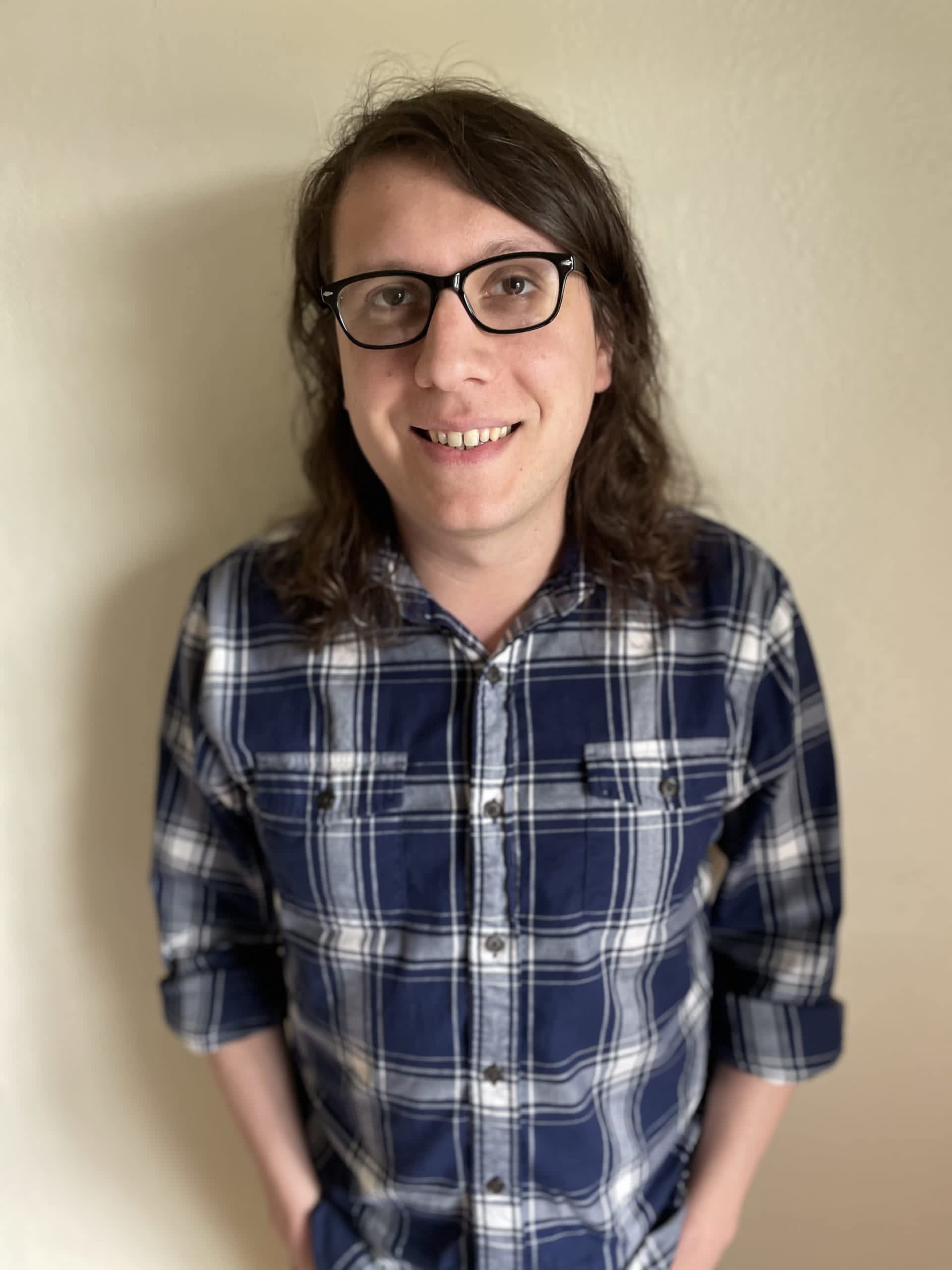
Reese Lopez
Contributing Writer
Learn about our editorial process .
Updated February 22, 2024
CollegeChoice.net is an advertising-supported site. Featured or trusted partner programs and all school search, finder, or match results are for schools that compensate us. This compensation does not influence our school rankings, resource guides, or other editorially-independent information published on this site.
Turn Your Dreams Into Reality
Take our quiz and we'll do the homework for you! Compare your school matches and apply to your top choice today.
The teaching and education field encompasses more than just teachers. School principals, researchers, and instructional coordinators perform important work in schools and other education organizations. Regardless of their role, educators work to ensure the best possible education for students.
Teaching and education programs cover all aspects of education. Some programs focus on classroom teaching at different grade levels, including elementary, middle, and high school. Other programs emphasize the administrative or research side of education, such as educational leadership or curriculum and instruction.
This guide explains teaching and education degrees. Read on to learn about fields of study, professional benefits, and career options after graduation.

Fields of Study in Teaching and Education
The education field includes many emphasis areas. This list highlights five of the most popular careers for education graduates.
1. School Counseling
School counselors help students solve social and academic problems. Counselors at the high school level also prepare students for college or careers. They may help schools develop best practices to meet students' social and educational needs.
Degree-seekers complete specialized classes in psychology. They explore counseling methods and child and adolescent development. Learners also gain skills to communicate effectively with students and their families.
Most graduates pursue careers as school counselors. These positions typically require a master's degree and state licensure.
2. Educational Leadership
Educational leadership focuses on the administrative side of education. Enrollees learn how to manage schools and other education organizations. Classes cover topics like educational law and policy, strategic planning, and curriculum development. Educational leadership programs may also emphasize business approaches to education. Degree-seekers may learn about school budgeting and finance.
Compared to other education majors, educational leadership focuses less on classroom teaching and instructional strategies. Enrollees gain broader administrative and managerial skills to oversee K-12 school operations.
Educational leadership programs commonly prepare candidates for jobs as school principals. Graduates may also pursue careers with school districts and other education organizations.
3. Special Education
Special education focuses on meeting the needs of students with developmental disabilities. Special educators often work with students experiencing mental, physical, and emotional issues that affect their learning.
A special education degree focuses on teaching strategies and methods for special needs students. Degree-seekers explore different types of learning disabilities and appropriate teaching methods to meet varied needs.
Special education graduates often work as K-12 special education teachers. Advanced education can help them move into administrative careers, developing broader special education policies for schools and school districts.
4. Curriculum and Instruction
Curriculum and instruction focuses on overall approaches to education, determining how schools educate their students. Programs use the latest education research to develop teaching practices and curriculum standards. Most schools offer these programs at the graduate level, serving experienced teachers and other education professionals.
Curriculum and instruction programs emphasize theories of learning, exploring varied approaches to reach different types of students. Degree-seekers may also explore specialized topics such as learning technologies and educational research methods. Graduates often pursue careers in education administration, working with schools and school districts to develop instructional practices.
5. Elementary Education
Elementary education focuses on teaching strategies and methods for younger students, typically grades K-6. Compared to middle and high school, elementary education focuses on broad subject content in areas such as math, reading, and social studies. Elementary education also helps students build foundational social skills for both school and life.
Elementary education classes focus on specific subject content and general teaching practice. Enrollees gain knowledge and skills in classroom management, curriculum development, and child development. Graduates often work as elementary school teachers. With advanced education, they may work as curriculum specialists or instructional coordinators.
Benefits of Earning a Degree in Teaching and Education
A teaching and education program offers many academic and professional benefits. This section highlights some top reasons to pursue a teaching degree.
1. Increased Career Options
Earning a teaching and education degree prepares candidates to pursue specialized careers in the education field. Most high-paying education jobs require at least a bachelor's degree. More advanced positions may require a master's degree. Candidates can often earn licensure or certifications as part of their degree curriculum. This may lead to more job opportunities.
2. Increased Salary Potential
Along with increased career options, a teaching degree typically leads to higher pay. Bachelor's degree-holders earn a median weekly salary of $1,305, compared to $781 for high school graduates, according to the Bureau of Labor Statistics (BLS). Master's degree-holders earn a median weekly salary of $1,545.
3. Specialized Skills
Teaching and education degrees build advanced knowledge and skills for teachers. Enrollees study the history and philosophy of education, gaining a deeper understanding of its purpose and function in society. They also build skills in classroom management, lesson planning, and student assessment.
4. Classroom Experience
Most teaching and education programs require a practicum. Candidates usually perform student teaching activities in a classroom or other school setting. They gain hands-on experience under the supervision of a professional educator. These experiences help them draw connections between education theory and practice.
5. Networking Opportunities
Teaching and education programs unite degree-seekers with peers in the education field. Learners can network and build professional connections. Degree-seekers can also share skills and knowledge, join professional organizations, and connect to potential job opportunities.
Career Outlook for Teachers and Educators
Education and teaching graduates can pursue many careers in the education field. See below for some common careers for educators, including job descriptions and salary data.
Instructional Coordinator
These workers manage curriculum practices and education standards for schools and school districts. They may create new curricula, analyze student performance data, and evaluate textbooks and other materials. Instructional coordinators may also train teachers on new curriculum standards.
These professionals typically need a master's degree in education, curriculum development, or a related subject. They may also need teaching or education administration licensure. Instructional coordinators earn an annual median salary of $63,740 . The BLS projects jobs for these workers to grow 7% from 2021-2031, which is about as fast as the national average.
Kindergarten and Elementary School Teacher
These teachers instruct younger students in basic academic subjects. They typically create lesson plans, teach students, and grade assignments. Elementary teachers also assess students' overall learning and communicate with parents. Compared to other educators, elementary school teachers may take greater responsibility for helping students learn to socialize.
These teachers need at least a bachelor's degree. They also need teaching licensure or certification to work at public schools. Kindergarten and elementary school teachers earn an annual median salary of $61,350 . The BLS projects jobs for these teachers to grow 4% from 2021-2031.
Middle School Teacher
These teachers instruct students in grades 6-8. They typically focus on a specific subject area, such as math, science, or language arts. These educators prepare lesson plans and deliver lessons to students.
Middle school teachers need at least a bachelor's degree. They often major in the subject area they plan to teach. However, many middle school teachers hold teaching degrees. Middle school teachers also need certification or licensure. These professionals earn an annual median salary of $61,320 . The BLS projects jobs for these teachers to grow 4% from 2021-2031.
High School Teacher
These teachers instruct students in grades 9-12. Like middle school teachers, they usually focus on one subject area. High school teachers create lesson plans, teach students, and grade assignments.
These educators need at least a bachelor's degree and state licensure or certification. They often hold a degree in their subject area, such as math or history. Earning a master's degree may help them earn higher pay. High school teachers earn a median annual salary of $61,820 . The BLS projects jobs for these teachers to grow 5% from 2021-2031.
Special Education Teacher
These teachers work with students with physical, mental, or learning disabilities. They assess students' needs and devise effective lesson plans to meet different learning styles. Special education teachers work with students at all levels.
These educators need at least a bachelor's degree. Many employers prefer candidates with a degree specifically in special education. Like other educators, these teachers need licensure or certification. Special education teachers earn a median annual salary of $61,820 . The BLS projects jobs for these educators to grow 4% between 2021-2031.
Postsecondary Teachers
These teachers instruct students at colleges and community colleges. Compared to K-12 teachers , they teach more advanced subject matter in more specialized areas. College instructors usually spend a significant amount of time conducting research in their field.
Postsecondary teachers typically need a doctorate. However, employers may accept a master's degree for some positions. Unlike other educators, postsecondary teachers do not always need licensure or certification. These educators earn an annual median salary of $79,640 . The BLS projects jobs for postsecondary teachers to grow 12% from 2021-2031, which is faster than the national average.
Elementary, Middle, and High School Principal
School principals oversee the major administrative and academic operations at K-12 schools. They commonly manage staff, develop curriculum standards, and create school budgets. Principals may also oversee teacher hiring and training.
School principals typically need a master's degree in education leadership or administration. They may also need teaching experience. Most states require school principals to hold school administration licensure. Some states may offer alternative certification pathways for candidates without a master's in educational leadership. School principals earn a median annual salary of $98,420 . The BLS projects jobs for these professionals to grow 5% from 2021-2031.
Earning a Teacher License
Teaching licensure requirements vary by state. However, all U.S. states require teachers to hold at least a bachelor's degree. Teachers may hold a degree in education or in the specific subject they plan to teach. Candidates must also complete required student teaching hours either as part of a degree or a teaching certification program.
Along with education, teachers must complete a certification exam that tests knowledge of teaching practices and regulations. Most states require teachers to pass both a general exam and a subject exam for the area they plan to teach. The Praxis Tests prepare teachers for certification in many states.
Most states also require licensed teachers to complete continuing education and other professional development activities. Some states require teachers to earn a master's degree after they obtain initial certification. Teach.org features information on individual state licensing and continuing education requirements.
Learn More About Teaching and Education
Online college resources.
Helping you prepare and gain the most out of your educational experience.
- Top 200 Universities in the World
- Top 200 Universities in North America
- Top 200 Universities in Latin America
- Top 200 Universities in Europe
- Top 200 Universities in Africa
- Top 200 Universities in Asia
- Top 50 Universities in Oceania
- Top 200 English-speaking Universities
- Top 200 Spanish-speaking Universities
- Top 200 Arabic-speaking Universities
- Top 200 Universities on Facebook
- Top 200 Universities on Twitter
- Top 200 Universities on Instagram
- Top 200 Universities on YouTube
- Top religiously affiliated Universities
- Universities in North America
- Universities in Latin America
- Universities in Europe
- Universities in Africa
- Universities in Asia
- Universities in Oceania
- A-Z Guide to University Programs, Courses and Degrees
- University Guides and Articles
- Universities on Facebook
- Universities on Twitter
- Universities on Instagram
- Universities on YouTube
- Universities on TikTok
- Universities on LinkedIn
- Free online courses by OEG Universities
- Higher Education-related Organizations
- Directory of University Libraries
- Religiously Affiliated Universities
- Higher Education Glossary
- A-Z list of World Universities
Field of Education
What does the academic term Field of Education mean in higher education?
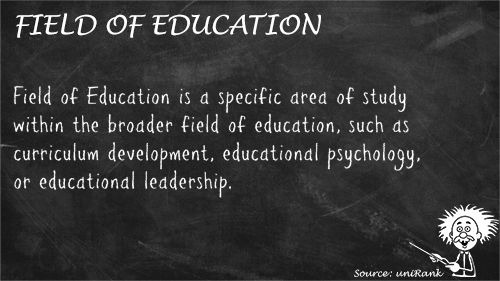
Short Definition
Field of Education is a specific area of study within the broader field of education, such as curriculum development, educational psychology, or educational leadership.
In-depth Overview
Long definition : The term "field of education" refers to a specific area or discipline of study within the realm of formal learning and academic institutions. It encompasses a wide range of subjects and specialties, each focused on a particular body of knowledge, skillset or profession. Fields of education are typically organized into academic departments or faculties within universities and colleges.
Etymology : The word "field" has its origins in Old English and originally referred to an open expanse of land. In the context of education, it implies an area of study that one can explore and cultivate knowledge in. The term "education" comes from the Latin word "educare", meaning to "bring up" or "rear". Together, "field of education" suggests a cultivated area of knowledge and learning.
Synonyms or related academic terms : Academic discipline, subject area, major, specialization, domain of study.
- She chose biology as her field of education and is majoring in genetics.
- The university offers a diverse range of fields of education, from engineering to literature.
- His extensive experience in the field of education led to a successful career as a professor.
Translations : Spanish: Campo de educación French: Domaine de l'éducation German: Bildungsbereich Italian: Campo dell'istruzione Portuguese: Campo da educação Japanese: 教育の分野 (Kyōiku no bun'ya) Chinese (Simplified): 教育领域 (Jiàoyù lǐngyù) Hindi: शिक्षा क्षेत्र (Shiksha Kshetra)
Visitors can search for this term through the uniRank World Universities Search Engine.
Wikipedia Article
Unirank glossary classification.
Miscellaneous higher education terms > University academic terms
Share Glossary Term
Interesting? Share this University Glossary term with your friends now.
Feedback, Errors
We appreciate your feedback and error reports.
© uniRank since 2005
University rankings, universities by country, free online courses, universities on social media, more resources.
About | Methodology | Contact | Advertise | Terms | Privacy | Change privacy settings
©uniRank 2005-2024

- Table of Contents
- Random Entry
- Chronological
- Editorial Information
- About the SEP
- Editorial Board
- How to Cite the SEP
- Special Characters
- Advanced Tools
- Support the SEP
- PDFs for SEP Friends
- Make a Donation
- SEPIA for Libraries
- Entry Contents
Bibliography
Academic tools.
- Friends PDF Preview
- Author and Citation Info
- Back to Top
Philosophy of Education
Philosophy of education is the branch of applied or practical philosophy concerned with the nature and aims of education and the philosophical problems arising from educational theory and practice. Because that practice is ubiquitous in and across human societies, its social and individual manifestations so varied, and its influence so profound, the subject is wide-ranging, involving issues in ethics and social/political philosophy, epistemology, metaphysics, philosophy of mind and language, and other areas of philosophy. Because it looks both inward to the parent discipline and outward to educational practice and the social, legal, and institutional contexts in which it takes place, philosophy of education concerns itself with both sides of the traditional theory/practice divide. Its subject matter includes both basic philosophical issues (e.g., the nature of the knowledge worth teaching, the character of educational equality and justice, etc.) and problems concerning specific educational policies and practices (e.g., the desirability of standardized curricula and testing, the social, economic, legal and moral dimensions of specific funding arrangements, the justification of curriculum decisions, etc.). In all this the philosopher of education prizes conceptual clarity, argumentative rigor, the fair-minded consideration of the interests of all involved in or affected by educational efforts and arrangements, and informed and well-reasoned valuation of educational aims and interventions.
Philosophy of education has a long and distinguished history in the Western philosophical tradition, from Socrates’ battles with the sophists to the present day. Many of the most distinguished figures in that tradition incorporated educational concerns into their broader philosophical agendas (Curren 2000, 2018; Rorty 1998). While that history is not the focus here, it is worth noting that the ideals of reasoned inquiry championed by Socrates and his descendants have long informed the view that education should foster in all students, to the extent possible, the disposition to seek reasons and the ability to evaluate them cogently, and to be guided by their evaluations in matters of belief, action and judgment. This view, that education centrally involves the fostering of reason or rationality, has with varying articulations and qualifications been embraced by most of those historical figures; it continues to be defended by contemporary philosophers of education as well (Scheffler 1973 [1989]; Siegel 1988, 1997, 2007, 2017). As with any philosophical thesis it is controversial; some dimensions of the controversy are explored below.
This entry is a selective survey of important contemporary work in Anglophone philosophy of education; it does not treat in detail recent scholarship outside that context.
1. Problems in Delineating the Field
2. analytic philosophy of education and its influence, 3.1 the content of the curriculum and the aims and functions of schooling, 3.2 social, political and moral philosophy, 3.3 social epistemology, virtue epistemology, and the epistemology of education, 3.4 philosophical disputes concerning empirical education research, 4. concluding remarks, other internet resources, related entries.
The inward/outward looking nature of the field of philosophy of education alluded to above makes the task of delineating the field, of giving an over-all picture of the intellectual landscape, somewhat complicated (for a detailed account of this topography, see Phillips 1985, 2010). Suffice it to say that some philosophers, as well as focusing inward on the abstract philosophical issues that concern them, are drawn outwards to discuss or comment on issues that are more commonly regarded as falling within the purview of professional educators, educational researchers, policy-makers and the like. (An example is Michael Scriven, who in his early career was a prominent philosopher of science; later he became a central figure in the development of the field of evaluation of educational and social programs. See Scriven 1991a, 1991b.) At the same time, there are professionals in the educational or closely related spheres who are drawn to discuss one or another of the philosophical issues that they encounter in the course of their work. (An example here is the behaviorist psychologist B.F. Skinner, the central figure in the development of operant conditioning and programmed learning, who in works such as Walden Two (1948) and Beyond Freedom and Dignity (1972) grappled—albeit controversially—with major philosophical issues that were related to his work.)
What makes the field even more amorphous is the existence of works on educational topics, written by well-regarded philosophers who have made major contributions to their discipline; these educational reflections have little or no philosophical content, illustrating the truth that philosophers do not always write philosophy. However, despite this, works in this genre have often been treated as contributions to philosophy of education. (Examples include John Locke’s Some Thoughts Concerning Education [1693] and Bertrand Russell’s rollicking pieces written primarily to raise funds to support a progressive school he ran with his wife. (See Park 1965.)
Finally, as indicated earlier, the domain of education is vast, the issues it raises are almost overwhelmingly numerous and are of great complexity, and the social significance of the field is second to none. These features make the phenomena and problems of education of great interest to a wide range of socially-concerned intellectuals, who bring with them their own favored conceptual frameworks—concepts, theories and ideologies, methods of analysis and argumentation, metaphysical and other assumptions, and the like. It is not surprising that scholars who work in this broad genre also find a home in the field of philosophy of education.
As a result of these various factors, the significant intellectual and social trends of the past few centuries, together with the significant developments in philosophy, all have had an impact on the content of arguments and methods of argumentation in philosophy of education—Marxism, psycho-analysis, existentialism, phenomenology, positivism, post-modernism, pragmatism, neo-liberalism, the several waves of feminism, analytic philosophy in both its ordinary language and more formal guises, are merely the tip of the iceberg.
Conceptual analysis, careful assessment of arguments, the rooting out of ambiguity, the drawing of clarifying distinctions—all of which are at least part of the philosophical toolkit—have been respected activities within philosophy from the dawn of the field. No doubt it somewhat over-simplifies the complex path of intellectual history to suggest that what happened in the twentieth century—early on, in the home discipline itself, and with a lag of a decade or more in philosophy of education—is that philosophical analysis came to be viewed by some scholars as being the major philosophical activity (or set of activities), or even as being the only viable or reputable activity. In any case, as they gained prominence and for a time hegemonic influence during the rise of analytic philosophy early in the twentieth century analytic techniques came to dominate philosophy of education in the middle third of that century (Curren, Robertson, & Hager 2003).
The pioneering work in the modern period entirely in an analytic mode was the short monograph by C.D. Hardie, Truth and Fallacy in Educational Theory (1941; reissued in 1962). In his Introduction, Hardie (who had studied with C.D. Broad and I.A. Richards) made it clear that he was putting all his eggs into the ordinary-language-analysis basket:
The Cambridge analytical school, led by Moore, Broad and Wittgenstein, has attempted so to analyse propositions that it will always be apparent whether the disagreement between philosophers is one concerning matters of fact, or is one concerning the use of words, or is, as is frequently the case, a purely emotive one. It is time, I think, that a similar attitude became common in the field of educational theory. (Hardie 1962: xix)
About a decade after the end of the Second World War the floodgates opened and a stream of work in the analytic mode appeared; the following is merely a sample. D. J. O’Connor published An Introduction to Philosophy of Education (1957) in which, among other things, he argued that the word “theory” as it is used in educational contexts is merely a courtesy title, for educational theories are nothing like what bear this title in the natural sciences. Israel Scheffler, who became the paramount philosopher of education in North America, produced a number of important works including The Language of Education (1960), which contained clarifying and influential analyses of definitions (he distinguished reportive, stipulative, and programmatic types) and the logic of slogans (often these are literally meaningless, and, he argued, should be seen as truncated arguments), Conditions of Knowledge (1965), still the best introduction to the epistemological side of philosophy of education, and Reason and Teaching (1973 [1989]), which in a wide-ranging and influential series of essays makes the case for regarding the fostering of rationality/critical thinking as a fundamental educational ideal (cf. Siegel 2016). B. O. Smith and R. H. Ennis edited the volume Language and Concepts in Education (1961); and R.D. Archambault edited Philosophical Analysis and Education (1965), consisting of essays by a number of prominent British writers, most notably R. S. Peters (whose status in Britain paralleled that of Scheffler in the United States), Paul Hirst, and John Wilson. Topics covered in the Archambault volume were typical of those that became the “bread and butter” of analytic philosophy of education (APE) throughout the English-speaking world—education as a process of initiation, liberal education, the nature of knowledge, types of teaching, and instruction versus indoctrination.
Among the most influential products of APE was the analysis developed by Hirst and Peters (1970) and Peters (1973) of the concept of education itself. Using as a touchstone “normal English usage,” it was concluded that a person who has been educated (rather than instructed or indoctrinated) has been (i) changed for the better; (ii) this change has involved the acquisition of knowledge and intellectual skills and the development of understanding; and (iii) the person has come to care for, or be committed to, the domains of knowledge and skill into which he or she has been initiated. The method used by Hirst and Peters comes across clearly in their handling of the analogy with the concept of “reform”, one they sometimes drew upon for expository purposes. A criminal who has been reformed has changed for the better, and has developed a commitment to the new mode of life (if one or other of these conditions does not hold, a speaker of standard English would not say the criminal has been reformed). Clearly the analogy with reform breaks down with respect to the knowledge and understanding conditions. Elsewhere Peters developed the fruitful notion of “education as initiation”.
The concept of indoctrination was also of great interest to analytic philosophers of education, for, it was argued, getting clear about precisely what constitutes indoctrination also would serve to clarify the border that demarcates it from acceptable educational processes. Thus, whether or not an instructional episode was a case of indoctrination was determined by the content taught, the intention of the instructor, the methods of instruction used, the outcomes of the instruction, or by some combination of these. Adherents of the different analyses used the same general type of argument to make their case, namely, appeal to normal and aberrant usage. Unfortunately, ordinary language analysis did not lead to unanimity of opinion about where this border was located, and rival analyses of the concept were put forward (Snook 1972). The danger of restricting analysis to ordinary language (“normal English usage”) was recognized early on by Scheffler, whose preferred view of analysis emphasized
first, its greater sophistication as regards language, and the interpenetration of language and inquiry, second, its attempt to follow the modern example of the sciences in empirical spirit, in rigor, in attention to detail, in respect for alternatives, and in objectivity of method, and third, its use of techniques of symbolic logic brought to full development only in the last fifty years… It is…this union of scientific spirit and logical method applied toward the clarification of basic ideas that characterizes current analytic philosophy [and that ought to characterize analytic philosophy of education]. (Scheffler 1973 [1989: 9–10])
After a period of dominance, for a number of important reasons the influence of APE went into decline. First, there were growing criticisms that the work of analytic philosophers of education had become focused upon minutiae and in the main was bereft of practical import. (It is worth noting that a 1966 article in Time , reprinted in Lucas 1969, had put forward the same criticism of mainstream philosophy.) Second, in the early 1970’s radical students in Britain accused Peters’ brand of linguistic analysis of conservatism, and of tacitly giving support to “traditional values”—they raised the issue of whose English usage was being analyzed?
Third, criticisms of language analysis in mainstream philosophy had been mounting for some time, and finally after a lag of many years were reaching the attention of philosophers of education; there even had been a surprising degree of interest on the part of the general reading public in the United Kingdom as early as 1959, when Gilbert Ryle, editor of the journal Mind , refused to commission a review of Ernest Gellner’s Words and Things (1959)—a detailed and quite acerbic critique of Wittgenstein’s philosophy and its espousal of ordinary language analysis. (Ryle argued that Gellner’s book was too insulting, a view that drew Bertrand Russell into the fray on Gellner’s side—in the daily press, no less; Russell produced a list of insulting remarks drawn from the work of great philosophers of the past. See Mehta 1963.)
Richard Peters had been given warning that all was not well with APE at a conference in Canada in 1966; after delivering a paper on “The aims of education: A conceptual inquiry” that was based on ordinary language analysis, a philosopher in the audience (William Dray) asked Peters “ whose concepts do we analyze?” Dray went on to suggest that different people, and different groups within society, have different concepts of education. Five years before the radical students raised the same issue, Dray pointed to the possibility that what Peters had presented under the guise of a “logical analysis” was nothing but the favored usage of a certain class of persons—a class that Peters happened to identify with (see Peters 1973, where to the editor’s credit the interaction with Dray is reprinted).
Fourth, during the decade of the seventies when these various critiques of analytic philosophy were in the process of eroding its luster, a spate of translations from the Continent stimulated some philosophers of education in Britain and North America to set out in new directions, and to adopt a new style of writing and argumentation. Key works by Gadamer, Foucault and Derrida appeared in English, and these were followed in 1984 by Lyotard’s The Postmodern Condition . The classic works of Heidegger and Husserl also found new admirers; and feminist philosophers of education were finding their voices—Maxine Greene published a number of pieces in the 1970s and 1980s, including The Dialectic of Freedom (1988); the influential book by Nel Noddings, Caring: A Feminine Approach to Ethics and Moral Education , appeared the same year as the work by Lyotard, followed a year later by Jane Roland Martin’s Reclaiming a Conversation . In more recent years all these trends have continued. APE was and is no longer the center of interest, although, as indicated below, it still retains its voice.
3. Areas of Contemporary Activity
As was stressed at the outset, the field of education is huge and contains within it a virtually inexhaustible number of issues that are of philosophical interest. To attempt comprehensive coverage of how philosophers of education have been working within this thicket would be a quixotic task for a large single volume and is out of the question for a solitary encyclopedia entry. Nevertheless, a valiant attempt to give an overview was made in A Companion to the Philosophy of Education (Curren 2003), which contains more than six-hundred pages divided into forty-five chapters each of which surveys a subfield of work. The following random selection of chapter topics gives a sense of the enormous scope of the field: Sex education, special education, science education, aesthetic education, theories of teaching and learning, religious education, knowledge, truth and learning, cultivating reason, the measurement of learning, multicultural education, education and the politics of identity, education and standards of living, motivation and classroom management, feminism, critical theory, postmodernism, romanticism, the purposes of universities, affirmative action in higher education, and professional education. The Oxford Handbook of Philosophy of Education (Siegel 2009) contains a similarly broad range of articles on (among other things) the epistemic and moral aims of education, liberal education and its imminent demise, thinking and reasoning, fallibilism and fallibility, indoctrination, authenticity, the development of rationality, Socratic teaching, educating the imagination, caring and empathy in moral education, the limits of moral education, the cultivation of character, values education, curriculum and the value of knowledge, education and democracy, art and education, science education and religious toleration, constructivism and scientific methods, multicultural education, prejudice, authority and the interests of children, and on pragmatist, feminist, and postmodernist approaches to philosophy of education.
Given this enormous range, there is no non-arbitrary way to select a small number of topics for further discussion, nor can the topics that are chosen be pursued in great depth. The choice of those below has been made with an eye to highlighting contemporary work that makes solid contact with and contributes to important discussions in general philosophy and/or the academic educational and educational research communities.
The issue of what should be taught to students at all levels of education—the issue of curriculum content—obviously is a fundamental one, and it is an extraordinarily difficult one with which to grapple. In tackling it, care needs to be taken to distinguish between education and schooling—for although education can occur in schools, so can mis-education, and many other things can take place there that are educationally orthogonal (such as the provision of free or subsidized lunches and the development of social networks); and it also must be recognized that education can occur in the home, in libraries and museums, in churches and clubs, in solitary interaction with the public media, and the like.
In developing a curriculum (whether in a specific subject area, or more broadly as the whole range of offerings in an educational institution or system), a number of difficult decisions need to be made. Issues such as the proper ordering or sequencing of topics in the chosen subject, the time to be allocated to each topic, the lab work or excursions or projects that are appropriate for particular topics, can all be regarded as technical issues best resolved either by educationists who have a depth of experience with the target age group or by experts in the psychology of learning and the like. But there are deeper issues, ones concerning the validity of the justifications that have been given for including/excluding particular subjects or topics in the offerings of formal educational institutions. (Why should evolution or creation “science” be included, or excluded, as a topic within the standard high school subject Biology? Is the justification that is given for teaching Economics in some schools coherent and convincing? Do the justifications for including/excluding materials on birth control, patriotism, the Holocaust or wartime atrocities in the curriculum in some school districts stand up to critical scrutiny?)
The different justifications for particular items of curriculum content that have been put forward by philosophers and others since Plato’s pioneering efforts all draw, explicitly or implicitly, upon the positions that the respective theorists hold about at least three sets of issues.
First, what are the aims and/or functions of education (aims and functions are not necessarily the same)? Many aims have been proposed; a short list includes the production of knowledge and knowledgeable students, the fostering of curiosity and inquisitiveness, the enhancement of understanding, the enlargement of the imagination, the civilizing of students, the fostering of rationality and/or autonomy, and the development in students of care, concern and associated dispositions and attitudes (see Siegel 2007 for a longer list). The justifications offered for all such aims have been controversial, and alternative justifications of a single proposed aim can provoke philosophical controversy. Consider the aim of autonomy. Aristotle asked, what constitutes the good life and/or human flourishing, such that education should foster these (Curren 2013)? These two formulations are related, for it is arguable that our educational institutions should aim to equip individuals to pursue this good life—although this is not obvious, both because it is not clear that there is one conception of the good or flourishing life that is the good or flourishing life for everyone, and it is not clear that this is a question that should be settled in advance rather than determined by students for themselves. Thus, for example, if our view of human flourishing includes the capacity to think and act autonomously, then the case can be made that educational institutions—and their curricula—should aim to prepare, or help to prepare, autonomous individuals. A rival justification of the aim of autonomy, associated with Kant, champions the educational fostering of autonomy not on the basis of its contribution to human flourishing, but rather the obligation to treat students with respect as persons (Scheffler 1973 [1989]; Siegel 1988). Still others urge the fostering of autonomy on the basis of students’ fundamental interests, in ways that draw upon both Aristotelian and Kantian conceptual resources (Brighouse 2005, 2009). It is also possible to reject the fostering of autonomy as an educational aim (Hand 2006).
Assuming that the aim can be justified, how students should be helped to become autonomous or develop a conception of the good life and pursue it is of course not immediately obvious, and much philosophical ink has been spilled on the general question of how best to determine curriculum content. One influential line of argument was developed by Paul Hirst, who argued that knowledge is essential for developing and then pursuing a conception of the good life, and because logical analysis shows, he argued, that there are seven basic forms of knowledge, the case can be made that the function of the curriculum is to introduce students to each of these forms (Hirst 1965; see Phillips 1987: ch. 11). Another, suggested by Scheffler, is that curriculum content should be selected so as “to help the learner attain maximum self-sufficiency as economically as possible.” The relevant sorts of economy include those of resources, teacher effort, student effort, and the generalizability or transfer value of content, while the self-sufficiency in question includes
self-awareness, imaginative weighing of alternative courses of action, understanding of other people’s choices and ways of life, decisiveness without rigidity, emancipation from stereotyped ways of thinking and perceiving…empathy… intuition, criticism and independent judgment. (Scheffler 1973 [1989: 123–5])
Both impose important constraints on the curricular content to be taught.
Second, is it justifiable to treat the curriculum of an educational institution as a vehicle for furthering the socio-political interests and goals of a dominant group, or any particular group, including one’s own; and relatedly, is it justifiable to design the curriculum so that it serves as an instrument of control or of social engineering? In the closing decades of the twentieth century there were numerous discussions of curriculum theory, particularly from Marxist and postmodern perspectives, that offered the sobering analysis that in many educational systems, including those in Western democracies, the curriculum did indeed reflect and serve the interests of powerful cultural elites. What to do about this situation (if it is indeed the situation of contemporary educational institutions) is far from clear and is the focus of much work at the interface of philosophy of education and social/political philosophy, some of which is discussed in the next section. A closely related question is this: ought educational institutions be designed to further pre-determined social ends, or rather to enable students to competently evaluate all such ends? Scheffler argued that we should opt for the latter: we must
surrender the idea of shaping or molding the mind of the pupil. The function of education…is rather to liberate the mind, strengthen its critical powers, [and] inform it with knowledge and the capacity for independent inquiry. (Scheffler 1973 [1989: 139])
Third, should educational programs at the elementary and secondary levels be made up of a number of disparate offerings, so that individuals with different interests and abilities and affinities for learning can pursue curricula that are suitable? Or should every student pursue the same curriculum as far as each is able?—a curriculum, it should be noted, that in past cases nearly always was based on the needs or interests of those students who were academically inclined or were destined for elite social roles. Mortimer Adler and others in the late twentieth century sometimes used the aphorism “the best education for the best is the best education for all.”
The thinking here can be explicated in terms of the analogy of an out-of-control virulent disease, for which there is only one type of medicine available; taking a large dose of this medicine is extremely beneficial, and the hope is that taking only a little—while less effective—is better than taking none at all. Medically, this is dubious, while the educational version—forcing students to work, until they exit the system, on topics that do not interest them and for which they have no facility or motivation—has even less merit. (For a critique of Adler and his Paideia Proposal , see Noddings 2015.) It is interesting to compare the modern “one curriculum track for all” position with Plato’s system outlined in the Republic , according to which all students—and importantly this included girls—set out on the same course of study. Over time, as they moved up the educational ladder it would become obvious that some had reached the limit imposed upon them by nature, and they would be directed off into appropriate social roles in which they would find fulfillment, for their abilities would match the demands of these roles. Those who continued on with their education would eventually become members of the ruling class of Guardians.
The publication of John Rawls’s A Theory of Justice in 1971 was the most notable event in the history of political philosophy over the last century. The book spurred a period of ferment in political philosophy that included, among other things, new research on educationally fundamental themes. The principles of justice in educational distribution have perhaps been the dominant theme in this literature, and Rawls’s influence on its development has been pervasive.
Rawls’s theory of justice made so-called “fair equality of opportunity” one of its constitutive principles. Fair equality of opportunity entailed that the distribution of education would not put the children of those who currently occupied coveted social positions at any competitive advantage over other, equally talented and motivated children seeking the qualifications for those positions (Rawls 1971: 72–75). Its purpose was to prevent socio-economic differences from hardening into social castes that were perpetuated across generations. One obvious criticism of fair equality of opportunity is that it does not prohibit an educational distribution that lavished resources on the most talented children while offering minimal opportunities to others. So long as untalented students from wealthy families were assigned opportunities no better than those available to their untalented peers among the poor, no breach of the principle would occur. Even the most moderate egalitarians might find such a distributive regime to be intuitively repugnant.
Repugnance might be mitigated somewhat by the ways in which the overall structure of Rawls’s conception of justice protects the interests of those who fare badly in educational competition. All citizens must enjoy the same basic liberties, and equal liberty always has moral priority over equal opportunity: the former can never be compromised to advance the latter. Further, inequality in the distribution of income and wealth are permitted only to the degree that it serves the interests of the least advantaged group in society. But even with these qualifications, fair equality of opportunity is arguably less than really fair to anyone. The fact that their education should secure ends other than access to the most selective social positions—ends such as artistic appreciation, the kind of self-knowledge that humanistic study can furnish, or civic virtue—is deemed irrelevant according to Rawls’s principle. But surely it is relevant, given that a principle of educational justice must be responsive to the full range of educationally important goods.
Suppose we revise our account of the goods included in educational distribution so that aesthetic appreciation, say, and the necessary understanding and virtue for conscientious citizenship count for just as much as job-related skills. An interesting implication of doing so is that the rationale for requiring equality under any just distribution becomes decreasingly clear. That is because job-related skills are positional whereas the other educational goods are not (Hollis 1982). If you and I both aspire to a career in business management for which we are equally qualified, any increase in your job-related skills is a corresponding disadvantage to me unless I can catch up. Positional goods have a competitive structure by definition, though the ends of civic or aesthetic education do not fit that structure. If you and I aspire to be good citizens and are equal in civic understanding and virtue, an advance in your civic education is no disadvantage to me. On the contrary, it is easier to be a good citizen the better other citizens learn to be. At the very least, so far as non-positional goods figure in our conception of what counts as a good education, the moral stakes of inequality are thereby lowered.
In fact, an emerging alternative to fair equality of opportunity is a principle that stipulates some benchmark of adequacy in achievement or opportunity as the relevant standard of distribution. But it is misleading to represent this as a contrast between egalitarian and sufficientarian conceptions. Philosophically serious interpretations of adequacy derive from the ideal of equal citizenship (Satz 2007; Anderson 2007). Then again, fair equality of opportunity in Rawls’s theory is derived from a more fundamental ideal of equality among citizens. This was arguably true in A Theory of Justice but it is certainly true in his later work (Dworkin 1977: 150–183; Rawls 1993). So, both Rawls’s principle and the emerging alternative share an egalitarian foundation. The debate between adherents of equal opportunity and those misnamed as sufficientarians is certainly not over (e.g., Brighouse & Swift 2009; Jacobs 2010; Warnick 2015). Further progress will likely hinge on explicating the most compelling conception of the egalitarian foundation from which distributive principles are to be inferred. Another Rawls-inspired alternative is that a “prioritarian” distribution of achievement or opportunity might turn out to be the best principle we can come up with—i.e., one that favors the interests of the least advantaged students (Schouten 2012).
The publication of Rawls’s Political Liberalism in 1993 signaled a decisive turning point in his thinking about justice. In his earlier book, the theory of justice had been presented as if it were universally valid. But Rawls had come to think that any theory of justice presented as such was open to reasonable rejection. A more circumspect approach to justification would seek grounds for justice as fairness in an overlapping consensus between the many reasonable values and doctrines that thrive in a democratic political culture. Rawls argued that such a culture is informed by a shared ideal of free and equal citizenship that provided a new, distinctively democratic framework for justifying a conception of justice. The shift to political liberalism involved little revision on Rawls’s part to the content of the principles he favored. But the salience it gave to questions about citizenship in the fabric of liberal political theory had important educational implications. How was the ideal of free and equal citizenship to be instantiated in education in a way that accommodated the range of reasonable values and doctrines encompassed in an overlapping consensus? Political Liberalism has inspired a range of answers to that question (cf. Callan 1997; Clayton 2006; Bull 2008).
Other philosophers besides Rawls in the 1990s took up a cluster of questions about civic education, and not always from a liberal perspective. Alasdair Macintyre’s After Virtue (1984) strongly influenced the development of communitarian political theory which, as its very name might suggest, argued that the cultivation of community could preempt many of the problems with conflicting individual rights at the core of liberalism. As a full-standing alternative to liberalism, communitarianism might have little to recommend it. But it was a spur for liberal philosophers to think about how communities could be built and sustained to support the more familiar projects of liberal politics (e.g., Strike 2010). Furthermore, its arguments often converged with those advanced by feminist exponents of the ethic of care (Noddings 1984; Gilligan 1982). Noddings’ work is particularly notable because she inferred a cogent and radical agenda for the reform of schools from her conception of care (Noddings 1992).
One persistent controversy in citizenship theory has been about whether patriotism is correctly deemed a virtue, given our obligations to those who are not our fellow citizens in an increasingly interdependent world and the sordid history of xenophobia with which modern nation states are associated. The controversy is partly about what we should teach in our schools and is commonly discussed by philosophers in that context (Galston 1991; Ben-Porath 2006; Callan 2006; Miller 2007; Curren & Dorn 2018). The controversy is related to a deeper and more pervasive question about how morally or intellectually taxing the best conception of our citizenship should be. The more taxing it is, the more constraining its derivative conception of civic education will be. Contemporary political philosophers offer divergent arguments about these matters. For example, Gutmann and Thompson claim that citizens of diverse democracies need to “understand the diverse ways of life of their fellow citizens” (Gutmann & Thompson 1996: 66). The need arises from the obligation of reciprocity which they (like Rawls) believe to be integral to citizenship. Because I must seek to cooperate with others politically on terms that make sense from their moral perspective as well as my own, I must be ready to enter that perspective imaginatively so as to grasp its distinctive content. Many such perspectives prosper in liberal democracies, and so the task of reciprocal understanding is necessarily onerous. Still, our actions qua deliberative citizen must be grounded in such reciprocity if political cooperation on terms acceptable to us as (diversely) morally motivated citizens is to be possible at all. This is tantamount to an imperative to think autonomously inside the role of citizen because I cannot close-mindedly resist critical consideration of moral views alien to my own without flouting my responsibilities as a deliberative citizen.
Civic education does not exhaust the domain of moral education, even though the more robust conceptions of equal citizenship have far-reaching implications for just relations in civil society and the family. The study of moral education has traditionally taken its bearings from normative ethics rather than political philosophy, and this is largely true of work undertaken in recent decades. The major development here has been the revival of virtue ethics as an alternative to the deontological and consequentialist theories that dominated discussion for much of the twentieth century.
The defining idea of virtue ethics is that our criterion of moral right and wrong must derive from a conception of how the ideally virtuous agent would distinguish between the two. Virtue ethics is thus an alternative to both consequentialism and deontology which locate the relevant criterion in producing good consequences or meeting the requirements of moral duty respectively. The debate about the comparative merits of these theories is not resolved, but from an educational perspective that may be less important than it has sometimes seemed to antagonists in the debate. To be sure, adjudicating between rival theories in normative ethics might shed light on how best to construe the process of moral education, and philosophical reflection on the process might help us to adjudicate between the theories. There has been extensive work on habituation and virtue, largely inspired by Aristotle (Burnyeat 1980; Peters 1981). But whether this does anything to establish the superiority of virtue ethics over its competitors is far from obvious. Other aspects of moral education—in particular, the paired processes of role-modelling and identification—deserve much more scrutiny than they have received (Audi 2017; Kristjánsson 2015, 2017).
Related to the issues concerning the aims and functions of education and schooling rehearsed above are those involving the specifically epistemic aims of education and attendant issues treated by social and virtue epistemologists. (The papers collected in Kotzee 2013 and Baehr 2016 highlight the current and growing interactions among social epistemologists, virtue epistemologists, and philosophers of education.)
There is, first, a lively debate concerning putative epistemic aims. Alvin Goldman argues that truth (or knowledge understood in the “weak” sense of true belief) is the fundamental epistemic aim of education (Goldman 1999). Others, including the majority of historically significant philosophers of education, hold that critical thinking or rationality and rational belief (or knowledge in the “strong” sense that includes justification) is the basic epistemic educational aim (Bailin & Siegel 2003; Scheffler 1965, 1973 [1989]; Siegel 1988, 1997, 2005, 2017). Catherine Z. Elgin (1999a,b) and Duncan Pritchard (2013, 2016; Carter & Pritchard 2017) have independently urged that understanding is the basic aim. Pritchard’s view combines understanding with intellectual virtue ; Jason Baehr (2011) systematically defends the fostering of the intellectual virtues as the fundamental epistemic aim of education. This cluster of views continues to engender ongoing discussion and debate. (Its complex literature is collected in Carter and Kotzee 2015, summarized in Siegel 2018, and helpfully analyzed in Watson 2016.)
A further controversy concerns the places of testimony and trust in the classroom: In what circumstances if any ought students to trust their teachers’ pronouncements, and why? Here the epistemology of education is informed by social epistemology, specifically the epistemology of testimony; the familiar reductionism/anti-reductionism controversy there is applicable to students and teachers. Anti-reductionists, who regard testimony as a basic source of justification, may with equanimity approve of students’ taking their teachers’ word at face value and believing what they say; reductionists may balk. Does teacher testimony itself constitute good reason for student belief?
The correct answer here seems clearly enough to be “it depends”. For very young children who have yet to acquire or develop the ability to subject teacher declarations to critical scrutiny, there seems to be little alternative to accepting what their teachers tell them. For older and more cognitively sophisticated students there seem to be more options: they can assess them for plausibility, compare them with other opinions, assess the teachers’ proffered reasons, subject them to independent evaluation, etc. Regarding “the teacher says that p ” as itself a good reason to believe it appears moreover to contravene the widely shared conviction that an important educational aim is helping students to become able to evaluate candidate beliefs for themselves and believe accordingly. That said, all sides agree that sometimes believers, including students, have good reasons simply to trust what others tell them. There is thus more work to do here by both social epistemologists and philosophers of education (for further discussion see Goldberg 2013; Siegel 2005, 2018).
A further cluster of questions, of long-standing interest to philosophers of education, concerns indoctrination : How if at all does it differ from legitimate teaching? Is it inevitable, and if so is it not always necessarily bad? First, what is it? As we saw earlier, extant analyses focus on the aims or intentions of the indoctrinator, the methods employed, or the content transmitted. If the indoctrination is successful, all have the result that students/victims either don’t, won’t, or can’t subject the indoctrinated material to proper epistemic evaluation. In this way it produces both belief that is evidentially unsupported or contravened and uncritical dispositions to believe. It might seem obvious that indoctrination, so understood, is educationally undesirable. But it equally seems that very young children, at least, have no alternative but to believe sans evidence; they have yet to acquire the dispositions to seek and evaluate evidence, or the abilities to recognize evidence or evaluate it. Thus we seem driven to the views that indoctrination is both unavoidable and yet bad and to be avoided. It is not obvious how this conundrum is best handled. One option is to distinguish between acceptable and unacceptable indoctrination. Another is to distinguish between indoctrination (which is always bad) and non-indoctrinating belief inculcation, the latter being such that students are taught some things without reasons (the alphabet, the numbers, how to read and count, etc.), but in such a way that critical evaluation of all such material (and everything else) is prized and fostered (Siegel 1988: ch. 5). In the end the distinctions required by the two options might be extensionally equivalent (Siegel 2018).
Education, it is generally granted, fosters belief : in the typical propositional case, Smith teaches Jones that p , and if all goes well Jones learns it and comes to believe it. Education also has the task of fostering open-mindedness and an appreciation of our fallibility : All the theorists mentioned thus far, especially those in the critical thinking and intellectual virtue camps, urge their importance. But these two might seem at odds. If Jones (fully) believes that p , can she also be open-minded about it? Can she believe, for example, that earthquakes are caused by the movements of tectonic plates, while also believing that perhaps they aren’t? This cluster of italicized notions requires careful handling; it is helpfully discussed by Jonathan Adler (2002, 2003), who recommends regarding the latter two as meta-attitudes concerning one’s first-order beliefs rather than lessened degrees of belief or commitments to those beliefs.
Other traditional epistemological worries that impinge upon the epistemology of education concern (a) absolutism , pluralism and relativism with respect to knowledge, truth and justification as these relate to what is taught, (b) the character and status of group epistemologies and the prospects for understanding such epistemic goods “universalistically” in the face of “particularist” challenges, (c) the relation between “knowledge-how” and “knowledge-that” and their respective places in the curriculum, (d) concerns raised by multiculturalism and the inclusion/exclusion of marginalized perspectives in curriculum content and the classroom, and (e) further issues concerning teaching and learning. (There is more here than can be briefly summarized; for more references and systematic treatment cf. Bailin & Siegel 2003; Carter & Kotzee 2015; Cleverley & Phillips 1986; Robertson 2009; Siegel 2004, 2017; and Watson 2016.)
The educational research enterprise has been criticized for a century or more by politicians, policymakers, administrators, curriculum developers, teachers, philosophers of education, and by researchers themselves—but the criticisms have been contradictory. Charges of being “too ivory tower and theory-oriented” are found alongside “too focused on practice and too atheoretical”; but in light of the views of John Dewey and William James that the function of theory is to guide intelligent practice and problem-solving, it is becoming more fashionable to hold that the “theory v. practice” dichotomy is a false one. (For an illuminating account of the historical development of educational research and its tribulations, see Lagemann 2000.)
A similar trend can be discerned with respect to the long warfare between two rival groups of research methods—on one hand quantitative/statistical approaches to research, and on the other hand the qualitative/ethnographic family. (The choice of labels here is not entirely risk-free, for they have been contested; furthermore the first approach is quite often associated with “experimental” studies, and the latter with “case studies”, but this is an over-simplification.) For several decades these two rival methodological camps were treated by researchers and a few philosophers of education as being rival paradigms (Kuhn’s ideas, albeit in a very loose form, have been influential in the field of educational research), and the dispute between them was commonly referred to as “the paradigm wars”. In essence the issue at stake was epistemological: members of the quantitative/experimental camp believed that only their methods could lead to well-warranted knowledge claims, especially about the causal factors at play in educational phenomena, and on the whole they regarded qualitative methods as lacking in rigor; on the other hand the adherents of qualitative/ethnographic approaches held that the other camp was too “positivistic” and was operating with an inadequate view of causation in human affairs—one that ignored the role of motives and reasons, possession of relevant background knowledge, awareness of cultural norms, and the like. Few if any commentators in the “paradigm wars” suggested that there was anything prohibiting the use of both approaches in the one research program—provided that if both were used, they were used only sequentially or in parallel, for they were underwritten by different epistemologies and hence could not be blended together. But recently the trend has been towards rapprochement, towards the view that the two methodological families are, in fact, compatible and are not at all like paradigms in the Kuhnian sense(s) of the term; the melding of the two approaches is often called “mixed methods research”, and it is growing in popularity. (For more detailed discussion of these “wars” see Howe 2003 and Phillips 2009.)
The most lively contemporary debates about education research, however, were set in motion around the turn of the millennium when the US Federal Government moved in the direction of funding only rigorously scientific educational research—the kind that could establish causal factors which could then guide the development of practically effective policies. (It was held that such a causal knowledge base was available for medical decision-making.) The definition of “rigorously scientific”, however, was decided by politicians and not by the research community, and it was given in terms of the use of a specific research method—the net effect being that the only research projects to receive Federal funding were those that carried out randomized controlled experiments or field trials (RFTs). It has become common over the last decade to refer to the RFT as the “gold standard” methodology.
The National Research Council (NRC)—an arm of the US National Academies of Science—issued a report, influenced by postpostivistic philosophy of science (NRC 2002), that argued that this criterion was far too narrow. Numerous essays have appeared subsequently that point out how the “gold standard” account of scientific rigor distorts the history of science, how the complex nature of the relation between evidence and policy-making has been distorted and made to appear overly simple (for instance the role of value-judgments in linking empirical findings to policy directives is often overlooked), and qualitative researchers have insisted upon the scientific nature of their work. Nevertheless, and possibly because it tried to be balanced and supported the use of RFTs in some research contexts, the NRC report has been the subject of symposia in four journals, where it has been supported by a few and attacked from a variety of philosophical fronts: Its authors were positivists, they erroneously believed that educational inquiry could be value neutral and that it could ignore the ways in which the exercise of power constrains the research process, they misunderstood the nature of educational phenomena, and so on. This cluster of issues continues to be debated by educational researchers and by philosophers of education and of science, and often involves basic topics in philosophy of science: the constitution of warranting evidence, the nature of theories and of confirmation and explanation, etc. Nancy Cartwright’s important recent work on causation, evidence, and evidence-based policy adds layers of both philosophical sophistication and real world practical analysis to the central issues just discussed (Cartwright & Hardie 2012, Cartwright 2013; cf. Kvernbekk 2015 for an overview of the controversies regarding evidence in the education and philosophy of education literatures).
As stressed earlier, it is impossible to do justice to the whole field of philosophy of education in a single encyclopedia entry. Different countries around the world have their own intellectual traditions and their own ways of institutionalizing philosophy of education in the academic universe, and no discussion of any of this appears in the present essay. But even in the Anglo-American world there is such a diversity of approaches that any author attempting to produce a synoptic account will quickly run into the borders of his or her competence. Clearly this has happened in the present case.
Fortunately, in the last thirty years or so resources have become available that significantly alleviate these problems. There has been a flood of encyclopedia entries, both on the field as a whole and also on many specific topics not well-covered in the present essay (see, as a sample, Burbules 1994; Chambliss 1996b; Curren 1998, 2018; Phillips 1985, 2010; Siegel 2007; Smeyers 1994), two “Encyclopedias” (Chambliss 1996a; Phillips 2014), a “Guide” (Blake, Smeyers, Smith, & Standish 2003), a “Companion” (Curren 2003), two “Handbooks” (Siegel 2009; Bailey, Barrow, Carr, & McCarthy 2010), a comprehensive anthology (Curren 2007), a dictionary of key concepts in the field (Winch & Gingell 1999), and a good textbook or two (Carr 2003; Noddings 2015). In addition there are numerous volumes both of reprinted selections and of specially commissioned essays on specific topics, some of which were given short shrift here (for another sampling see A. Rorty 1998, Stone 1994), and several international journals, including Theory and Research in Education , Journal of Philosophy of Education , Educational Theory , Studies in Philosophy and Education , and Educational Philosophy and Theory . Thus there is more than enough material available to keep the interested reader busy.
- Adler, Jonathan E., 2002, Belief’s Own Ethics , Cambridge, MA: MIT Press.
- –––, 2003, “Knowledge, Truth and Learning”, in Curren 2003: 285–304. doi:10.1002/9780470996454.ch21
- Anderson, Elizabeth, 2007, “Fair Opportunity in Education: A Democratic Equality Perspective”, Ethics , 117(4): 595–622. doi:10.1086/518806
- Archambault, Reginald D. (ed.), 1965, Philosophical Analysis and Education , London: Routledge.
- Audi, Robert, 2017, “Role Modelling and Reasons: Developmental and Normative Grounds of Moral Virtue”, Journal of Moral Philosophy , 14(6): 646–668. doi:10.1163/17455243-46810063
- Baehr, Jason, 2011, The Inquiring Mind: On Intellectual Virtues and Virtue Epistemology , Oxford: Oxford University Press. doi:10.1093/acprof:oso/9780199604074.001.0001
- ––– (ed.), 2016, Intellectual Virtues and Education: Essays in Applied Virtue Epistemology , New York: Routledge.
- Bailey, Richard, Robin Barrow, David Carr, and Christine McCarthy (eds), 2010, The SAGE Handbook of the Philosophy of Education , Los Angeles: Sage. doi:10.4135/9781446200872
- Bailin, Sharon and Harvey Siegel, 2003, “Critical Thinking”, in Blake et al. 2003: 181–193. doi:10.1002/9780470996294.ch11
- Ben-Porath, Sigal R., 2006. Citizenship Under Fire: Democratic Education in Times of Conflict , Princeton, NJ: Princeton University Press.
- Blake, Nigel, Paul Smeyers, Richard Smith, and Paul Standish (eds.), 2003, The Blackwell Guide to the Philosophy of Education , Oxford: Blackwell. doi:10.1002/9780470996294
- Brighouse, Harry, 2005, On Education , London: Routledge.
- –––, 2009, “Moral and Political Aims of Education”, in Siegel 2009: 35–51.
- Brighouse, Harry and Adam Swift, 2009, “Educational Equality versus Educational Adequacy: A Critique of Anderson and Satz”, Journal of Applied Philosophy , 26(2): 117–128. doi:10.1111/j.1468-5930.2009.00438.x
- Bull, Barry L., 2008, Social Justice in Education: An Introduction , New York: Palgrave MacMillan.
- Burbules, Nicholas C., 1994, “Marxism and Educational Thought”, in The International Encyclopedia of Education , (Volume 6), Torsten Husén and T. Neville Postlethwaite (eds.), Oxford: Pergamon, second edition, pp. 3617–22.
- Burnyeat, Myles F., 1980, “Aristotle on Learning to be Good”, in Amélie Oksenberg Rorty (ed.), Essays on Aristotle’s Ethics , Berkeley CA: University of California Press, pp. 69–92.
- Callan, Eamonn, 1997, Creating Citizens: Political Education and Liberal Democracy , Oxford: Clarendon Press. doi:10.1093/0198292589.001.0001
- –––, 2006, “Love, Idolatry, and Patriotism”, Social Theory and Practice , 32(4): 525–546. doi:10.5840/soctheorpract200632430
- Carr, David, 2003, Making Sense of Education: An Introduction to the Philosophy and Theory of Education and Teaching , London: RoutledgeFalmer.
- Carter, J. Adam and Ben Kotzee, 2015, “Epistemology of Education”, Oxford Bibliographies Online , last modified: 26 October 2015.
- Carter, J.Adam and Duncan Pritchard, 2017, “Epistemic Situationism, Epistemic Dependence, and the Epistemology of Education”, in Abrol Fairweather and Mark Alfano (eds.), Epistemic Situationism , Oxford: Oxford University Press, pp. 168–191. doi:10.1093/oso/9780199688234.003.0010
- Cartwright, Nancy D., 2013, Evidence: For Policy and Wheresoever Rigor Is a Must , London: London School of Economics and Political Science.
- Cartwright, Nancy D. and Jeremy Hardie, 2012, Evidence-based Policy: A Practical Guide to Doing It Better , Oxford: Oxford University Press.
- Chambliss, J.J. (ed.), 1996a, Philosophy of Education: An Encyclopedia , New York: Garland.
- Chambliss, J.J., 1996b, “History of Philosophy of Education”, in Chambliss 1996a, pp. 461–472.
- Clayton, Matthew, 2006, Justice and Legitimacy in Upbringing , Oxford: Oxford University Press. doi:10.1093/0199268940.001.0001
- Cleverley, John and D.C. Phillips, 1986, Visions of Childhood: Influential Models from Locke to Spock , New York: Teachers College Press.
- Curren, Randall R., 1998, “Education, Philosophy of”, in E.J. Craig (ed.), Routledge Encyclopedia of Philosophy , vol. 3, pp. 231–240.
- –––, 2000, Aristotle on the Necessity of Public Education , Lanham, MD: Rowman & Littlefield.
- –––, (ed.), 2003, A Companion to the Philosophy of Education , Oxford: Blackwell. doi:10.1002/9780470996454
- –––, (ed.), 2007, Philosophy of Education: An Anthology , Oxford: Blackwell.
- –––, 2013, “A Neo-Aristotelian Account of Education, Justice and the Human Good”, Theory and Research in Education , 11(3): 231–249. doi:10.1177/1477878513498182
- –––, 2018, “Education, History of Philosophy of”, revised second version, in Routledge Encyclopedia of Philosophy Online . doi:10.4324/9780415249126-N014-2
- Curren, Randall, Emily Robertson, and Paul Hager, 2003, “The Analytical Movement”, in Curren 2003: 176–191. doi:10.1002/9780470996454.ch13
- Curren, Randall and Charles Dorn, 2018, Patriotic Education in a Global Age , Chicago: University of Chicago Press.
- Dworkin, Ronald, 1977, Taking Rights Seriously , Cambridge, MA: Harvard University Press.
- Elgin, Catherine Z., 1999a, “Epistemology’s Ends, Pedagogy’s Prospects”, Facta Philosophica , 1: 39–54
- –––, 1999b, “Education and the Advancement of Understanding”, in David M. Steiner (ed.), Proceedings of the 20 th World Congress of Philosophy , vol. 3, Philosophy Documentation Center, pp. 131–140.
- Galston, William A., 1991, Liberal Purposes: Goods, Virtues, and Diversity in the Liberal State , Cambridge: Cambridge University Press. doi:10.1017/CBO9781139172462
- Gellner, Ernest, 1959, Words and Things: A Critical Account of Linguistic Philosophy and a Study in Ideology , London: Gollancz.
- Gilligan, Carol, 1982, In a Different Voice: Psychological Theory and Women’s Development , Cambridge, MA: Harvard University Press.
- Goldberg, Sanford, 2013, “Epistemic Dependence in Testimonial Belief, in the Classroom and Beyond”, Journal of Philosophy of Education , 47(2): 168–186. doi:10.1111/1467-9752.12019
- Goldman, Alvin I., 1999, Knowledge in a Social World , Oxford: Oxford University Press. doi:10.1093/0198238207.001.0001
- Greene, Maxine, 1988, The Dialectic of Freedom , New York: Teachers College Press.
- Gutmann, Amy and Dennis F. Thompson, 1996, Democracy and Disagreement , Cambridge, MA: Belknap Press of Harvard University Press.
- Hand, Michael, 2006, “Against Autonomy as an Educational Aim”, Oxford Review of Education , 32(4): 535–550. doi:10.1080/03054980600884250
- Hardie, Charles Dunn, 1941 [1962], Truth and Fallacy in Educational Theory , New York: Teachers College Bureau of Publications.
- Hirst, Paul, 1965, “Liberal Education and the Nature of Knowledge”, in Philosophical Analysis and Education , Reginald D. Archambault, (ed.), London: Routledge, pp. 113–138.
- Hirst, Paul and R.S. Peters, 1970, The Logic of Education , London: Routledge.
- Hollis, Martin, 1982, “Education as A Positional Good”, Journal of Philosophy of Education , 16(2): 235–244. doi:10.1111/j.1467-9752.1982.tb00615.x
- Howe, Kenneth R., 2003, Closing Methodological Divides: Toward Democratic Educational Research , Dordrecht: Kluwer. doi:10.1007/0-306-47984-2
- Jacobs, Lesley A., 2010, “Equality, Adequacy, And Stakes Fairness: Retrieving the Equal Opportunities in Education Approach”, Theory and Research in Education , 8(3): 249–268. doi:10.1177/1477878510381627
- Kotzee, Ben (ed.), 2013, Education and the Growth of Knowledge: Perspectives from Social and Virtue Epistemology , Oxford: Wiley. doi:10.1002/9781118721254
- Kristjánsson, Kristján, 2015, Aristotelian Character Education , London: Routledge.
- –––, 2017, “Emotions Targeting Moral Exemplarity: Making Sense of the Logical Geography of Admiration, Emulation and Elevation”, Theory and Research in Education , 15(1): 20–37. doi:10.1177/1477878517695679
- Kvernbekk, Tone, 2015, Evidence-based Practice in Education: Functions of Evidence and Causal Presuppositions , London: Routledge.
- Lagemann, Ellen Condliffe, 2000, An Elusive Science: The Troubling History of Educational Research , Chicago: University of Chicago Press.
- Locke, J., 1693, Some Thoughts Concerning Education , London: Black Swan in Paternoster Row.
- Lucas, Christopher J. (ed.), 1969, What is Philosophy of Education? , London: Macmillan.
- Lyotard, J-F., 1984, The Postmodern Condition: A Report on Knowledge , Minneapolis: University of Minnesota Press.
- MacIntyre, Alasdair, 1984, After Virtue: A Study in Moral Theory , second edition, Notre Dame, IN: University of Notre Dame Press.
- Martin, Jane Roland, 1985, Reclaiming a Conversation: The Ideal of the Educated Woman , New Haven, CT: Yale University Press.
- Mehta, Ved, 1963, Fly and the Fly-Bottle: Encounters with British Intellectuals , London: Weidenfeld and Nicolson.
- Miller, Richard W., 2007, “Unlearning American Patriotism”, Theory and Research in Education , 5(1): 7–21. doi:10.1177/1477878507073602
- National Research Council (NRC), 2002, Scientific Research in Education , Washington, DC: National Academies Press. [ NRC 2002 available online ]
- Noddings, Nel, 1984, Caring: A Feminine Approach to Ethics and Moral Education , Berkeley: University of California Press.
- –––, 1992, The Challenge to Care in Schools: An Alternative Approach to Education , New York: Teachers College Press.
- –––, 2015, Philosophy of Education , fourth edition, Boulder, CO: Westview.
- O’Connor, D.J., 1957, An Introduction to Philosophy of Education , London: Routledge.
- Park, J., (ed.), 1965, Bertrand Russell on Education , London: Allen and Unwin.
- Peters, R.S., (ed.), 1973, The Philosophy of Education , Oxford: Oxford University Press.
- –––, 1981, Moral Development and Moral Education , London: G. Allen & Unwin.
- Phillips, D.C., 1985, “Philosophy of Education”, in International Encyclopedia of Education , Torsten Husén and T. Neville Postlethwaite, (eds.), pp. 3859–3877.
- –––, 1987, Philosophy, Science, and Social Inquiry: Contemporary Methodological Controversies in Social Science and Related Applied Fields of Research , Oxford: Pergamon.
- –––, 2009, “Empirical Educational Research: Charting Philosophical Disagreements in an Undisciplined Field”, in Siegel 2009: 381–406.
- –––, 2010, “What Is Philosophy of Education?”, in Bailey et al. 2010: 3–19. doi:10.4135/9781446200872.n1
- –––, (ed.), 2014, Encyclopedia of Educational Theory and Philosophy , Los Angeles: Sage.
- Pritchard, Duncan, 2013, “Epistemic Virtue and the Epistemology of Education”, Journal of Philosophy of Education , 47(2): 236–247. doi:10.1111/1467-9752.12022
- –––, 2016, “Intellectual Virtue, Extended Cognition, and the Epistemology of Education”, in Baehr 2016: 113–127.
- Rawls, John, 1971, A Theory of Justice , Cambridge MA: Harvard University Press.
- –––, 1993, Political Liberalism , New York: Columbia University Press.
- Robertson, Emily, 2009, “The Epistemic Aims of Education”, in Siegel 2009: 11–34.
- Rorty, Amélie Oksenberg (ed.), 1998, Philosophers on Education: New Historical Perspectives , New York: Routledge.
- Satz, Debra, 2007, “Equality, Adequacy, and Education for Citizenship”, Ethics , 117(4): 623–648. doi:10.1086/518805
- Scheffler, Israel, 1960, The Language of Education , Springfield, IL: Thomas.
- –––, 1965, Conditions of Knowledge: An Introduction to Epistemology and Education , Chicago: Scott, Foresman.
- –––, 1973 [1989], Reason and Teaching , Indianapolis, IN: Hackett.
- Schouten, Gina, 2012, “Fair Educational Opportunity and the Distribution of Natural Ability: Toward a Prioritarian Principle of Educational Justice”, Journal of Philosophy of Education , 46(3): 472–491. doi:10.1111/j.1467-9752.2012.00863.x
- Scriven, Michael, 1991a, “Beyond Formative and Summative Evaluation”, in Milbrey McLaughlin and D.C. Phillips (eds.), Evaluation and Education: At Quarter Century , Chicago: University of Chicago Press/NSSE, pp. 19–64.
- –––, 1991b, Evaluation Thesaurus , Thousand Oaks, CA: Sage.
- Siegel, Harvey, 1988, Educating Reason: Rationality, Critical Thinking, and Education , New York: Routledge.
- –––, 1997, Rationality Redeemed?: Further Dialogues on an Educational Ideal , New York: Routledge.
- –––, 2004, “Epistemology and Education: An Incomplete Guide to the Social-Epistemological Issues”, Episteme , 1(2): 129–137. doi:10.3366/epi.2004.1.2.129
- –––, 2005, “Truth, Thinking, Testimony and Trust: Alvin Goldman on Epistemology and Education”, Philosophy and Phenomenological Research , 71(2): 345–366. doi:10.1111/j.1933-1592.2005.tb00452.x
- –––, 2007, “Philosophy of Education”, in Britannica Online Encyclopedia , last modified 2 February 2018. URL = <https://academic.eb.com/levels/collegiate/article/philosophy-of-education/108550>
- –––, (ed.), 2009, The Oxford Handbook of Philosophy of Education , New York: Oxford University Press. doi:10.1093/oxfordhb/9780195312881.001.0001
- –––, 2016, “Israel Scheffler”, In J. A Palmer (ed.), Routledge Encyclopaedia of Educational Thinkers , London: Routledge, pp. 428–432.
- –––, 2017, Education’s Epistemology: Rationality, Diversity, and Critical Thinking , New York: Oxford University Press.
- –––, 2018, “The Epistemology of Education”, Routledge Encyclopedia of Philosophy Online , doi:10.4324/0123456789-P074-1.
- Skinner, B.F., 1948 [1962], Walden Two , New York: Macmillan.
- –––, 1972, Beyond Freedom and Dignity , London: Jonathan Cape.
- Smeyers, Paulus, 1994, “Philosophy of Education: Western European Perspectives”, in The International Encyclopedia of Education , (Volume 8), Torsten Husén and T. Neville Postlethwaite, (eds.), Oxford: Pergamon, second Edition, pp. 4456–61.
- Smith, B. Othanel and Robert H. Ennis (eds.), 1961, Language and Concepts in Education , Chicago: Rand McNally.
- Snook, I.A., 1972, Indoctrination and Education , London: Routledge & Kegan Paul.
- Stone, Lynda (ed.), 1994, The Education Feminism Reader , New York: Routledge.
- Strike, Kenneth A., 2010, Small Schools and Strong Communities: A Third Way of School Reform , New York: Teachers College Press.
- Warnick, Bryan R., 2015, “Taming the Conflict over Educational Equality”, Journal of Applied Philosophy , 32(1): 50–66. doi:10.1111/japp.12066
- Watson, Lani, 2016, “The Epistemology of Education”, Philosophy Compass , 11(3): 146–159. doi:10.1111/phc3.12316
- Winch, Christopher and John Gingell, 1999, Key Concepts in the Philosophy of Education , London: Routledge.
How to cite this entry . Preview the PDF version of this entry at the Friends of the SEP Society . Look up topics and thinkers related to this entry at the Internet Philosophy Ontology Project (InPhO). Enhanced bibliography for this entry at PhilPapers , with links to its database.
- PES (Philosophy of Education Society, North America)
- PESA (Philosophy of Education Society of Australasia)
- PESGB (Philosophy of Education Society of Great Britain)
- INPE (International Network of Philosophers of Education)
autonomy: personal | Dewey, John | feminist philosophy, interventions: ethics | feminist philosophy, interventions: liberal feminism | feminist philosophy, interventions: political philosophy | feminist philosophy, topics: perspectives on autonomy | feminist philosophy, topics: perspectives on disability | Foucault, Michel | Gadamer, Hans-Georg | liberalism | Locke, John | Lyotard, Jean François | -->ordinary language --> | Plato | postmodernism | Rawls, John | rights: of children | Rousseau, Jean Jacques
Acknowledgments
The authors and editors would like to thank Randall Curren for sending a number of constructive suggestions for the Summer 2018 update of this entry.
Copyright © 2018 by Harvey Siegel D.C. Phillips Eamonn Callan
- Accessibility
Support SEP
Mirror sites.
View this site from another server:
- Info about mirror sites
The Stanford Encyclopedia of Philosophy is copyright © 2023 by The Metaphysics Research Lab , Department of Philosophy, Stanford University
Library of Congress Catalog Data: ISSN 1095-5054
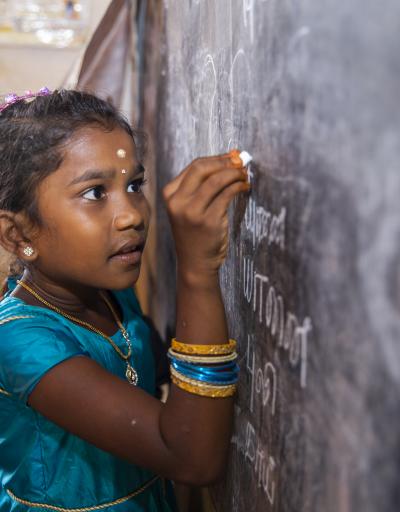
- SDG4 coordination
- Global Education Monitoring Report
- Global Coalition for Education
- UNESCO Chairs and UNITWIN Networks
- Global network of technical and vocational education and training institutions
- Global network of learning cities
- Right to education
- Education in emergencies
- Inclusion in education
- Early childhood care and education
- Higher education
- Literacy and adult learning
- Technical and vocational education and training
- Education and gender equality
- Girls’ and women’s education in science and technology
- Teacher education
- Education policies and strategies
- Education management, monitoring and evaluation
- Assessment for improved learning outcomes
- Curriculum development
- Global citizenship education
- Education about the Holocaust and genocide
- Countering hate speech
- Education for sustainable development
- Health and education
- Digital learning and transformation of education
- Futures of Education
- All UNESCO news on education
- Education stories
- Subscribe to the Education monthly newsletter
- Publications
- Databases and tools
- National education profiles
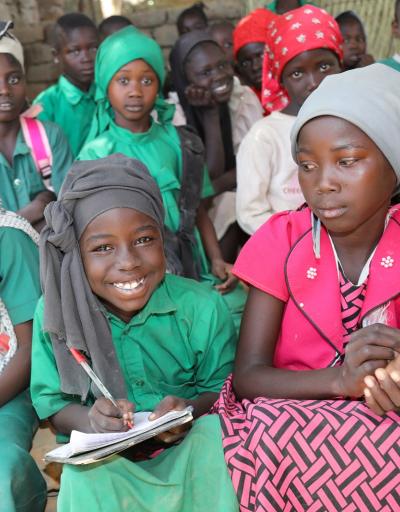
UNESCO’s action in education
Education is everyone’s right throughout life.
Education is a basic human right and a global public good with the power to transform individual lives, communities and the planet for the better over generations. UNESCO’s Education Sector provides global and regional leadership to ensure every child, youth and adult has access to quality education throughout life while keeping two priorities, Africa and gender , in focus.
Since its founding in 1945, in the aftermath of World War II, UNESCO’s education programme has evolved to match new global challenges including the existential threat of global warming, conflict, protracted crises and the accelerated digital revolution.
Education is a public good, it is delicate, it is fragile, but it is the best possible investment we can make.

Our mission
Rallying the world around the future of education.
UNESCO has the power to catalyze transformation in education by bringing together stakeholders around the ambitious Education 2030 Sustainable Development Agenda , and in particular, the targets set by Sustainable Development Goal 4 (SDG 4). The Organization works to implement, coordinate, finance and review this education agenda - globally, regionally and nationally - to guarantee everyone has the same educational opportunity. It uses its convening power to launch events such as the Transforming Education Pre-Summit (TES) in June 2022, which brought 154 ministers and around 2,000 participants together at UNESCO Headquarters to forge new approaches to education after the COVID-19 crisis, address the toughest bottlenecks to achieving SDG 4 and inspire young people to lead a global movement for education.
The pandemic, the worst disruption to education in history, which affected the learning of 1.6 billion children and youth and deepened existing learning inequalities, has served as warning and wake-up call for urgent change and innovation, the impetus for the UN’s Transforming Education Summit in September 2022.
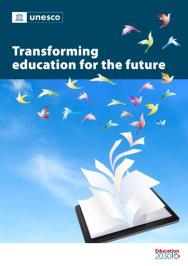
Our work: Reimagining, reshaping, rebuilding
UNESCO's task is to rethink and reimagine education for a sustainable future. The organization leads and coordinates the Education 2030 agenda through partnerships, monitoring and research. Our experts support countries to develop education systems that provide quality lifelong learning opportunities for all, and empower learners to be creative and responsible global citizens.
- Reimagining education
UNESCO anticipates and responds to emerging trends and needs in education, as seen in its ground-breaking Futures of Education report , a global initiative to rethink how learning can shape the future of humanity and the planet.
- Designing policies
UNESCO works with countries to design, implement and share successful education policies, plans and best practices based on data collection, monitoring and dialogue with national authorities.
- Standard-setting
UNESCO develops and monitors legal frameworks and normative instruments to ensure the right to education. These include the Convention against discrimination in education , the recent landmark Global Convention on the recognition of qualifications in higher education and an online monitor, Her Atlas , measuring the status of national legal frameworks related to girls’ and women’s education.
- Catalyzing for international cooperation
UNESCO uses its convening power for international cooperation by promoting dialogue, exchange and partnership among the global education community, including civil society and youth. This includes global conferences exploring areas such as early childhood care and education (2022), higher education (2022), adult learning (2022) and education for sustainable development (2021) that set the agenda for the decade ahead.
- Capacity-building
UNESCO provides technical advice and support to develop the institutional and human capacity of countries to achieve their education goals. This includes training of education practitioners and officers in multiple fields, including educational planning, curriculum design, data collection and distance learning.
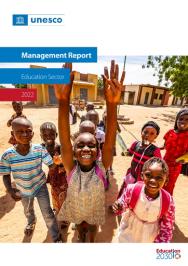
Our challenges
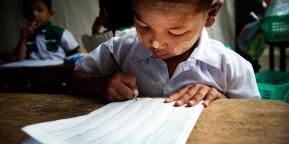
two thirds of them women
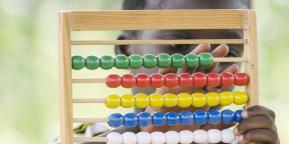
allocate less than 4%of their GDP to education
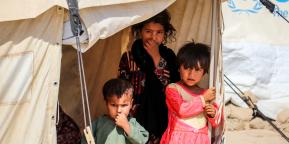
are affected by crises globally

don’t mention climate change
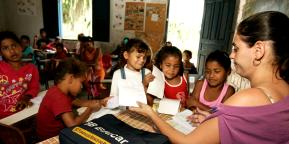
must be recruited to achieve universal primary and secondary education by 2030
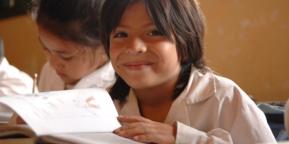
are out of school globally
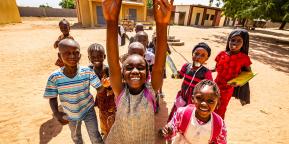
complete lower secondary school
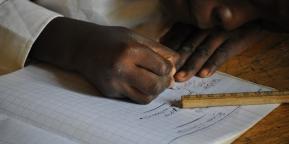
to get the world on track to achieve SDG 4 by 2030
Our key achievements include
UNESCO coordinates the international community to achieve the targets of the education goal SDG 4
Established by UNESCO, this multi-sector group works to protect education threatened by the pandemic from response to recovery
UNESCO’s flagship publication tracks the educational achievements of countries and the international community through annual themed reports
A UNESCO initiative reimagines a new future for education including the publication ’Towards the Futures: A new social contract for education’
Education transforms lives
Education transforms lives every day and in every corner of society. This video explores the power of education and UNESCO’s role in leading and coordinating the Education 2030 Agenda, which is part of a global movement to eradicate poverty through 17 Sustainable Development Goals by 2030. Education is the right of every woman, man and child. Together, we’re shaping the global citizens of tomorrow, empowered on the path of education to build a more sustainable future.
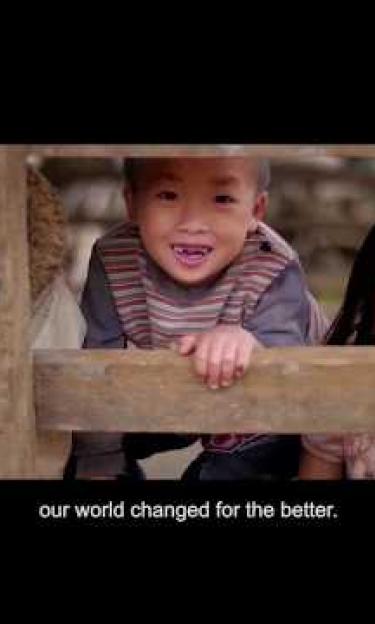
Education changes lives
Read how learning impact life
“Girls must believe in themselves and stop thinking that science is only for boys”
Angel , 17, a student at Ngweli secondary school in Sengerema, United Republic of Tanzania, has made dramatic improvement in physics thanks to her teachers being trained in gender sensitivity as part of the UNESCO, UNFPA, UN Women Joint Programme. Tanzania has one of the lowest rates of secondary education enrolment in Africa at 32 per cent. Read more .
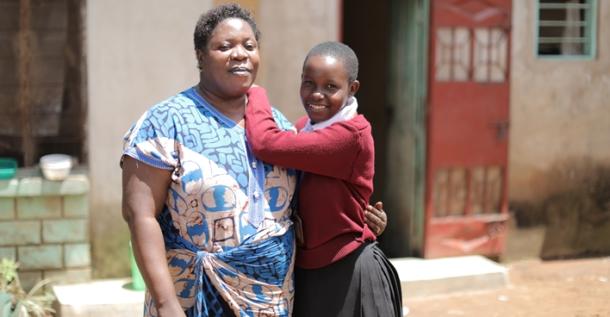
“I grew up in a modest family and married at the age of 15, so I could not finish school. But I was able to continue my studies at a UNESCO learning centre”
Isabel Aracely Tzoy Tzoc , an adult learner in Guatemala, gave up schooling when she married at 15 and suffered domestic abuse. At the UNESCO Malala Centre she was able to reintegrate in secondary level studies and through personal development workshops achieve a life free of violence. She hopes to become a doctor. Read more .
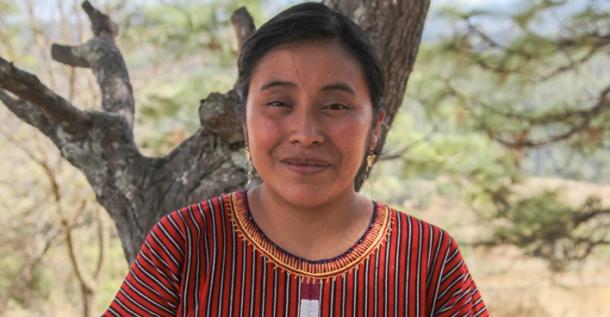
“After receiving the civil engineering diploma, I became interested in business management. I applied for a UNESCO scholarship and was accepted. Today, I have my own café”
Syrian refugee Saif Al-Sharaa was able to pick up his studies again in Jordan thanks to UNESCO’s technical and vocational education and training programme for vulnerable young Jordanians and Syrian refugees. After a scholarship and business management course he now owns the café where he worked as a student. Read more .

Brilliant work rewarded
UNESCO’s education prizes reward brilliant and innovative projects which work to achieve quality education for all while shining a light on critical themes.
- UNESCO Prize for Girls’ and Women’s Education
- UNESCO-Japan Prize on Education for Sustainable Development
- UNESCO-Hamdan Prize for Teacher Development
- UNESCO King Hamad Bin Isa Al-Khalifa Prize for the use of ICTs in Education
- UNESCO Literacy Prizes: the UNESCO King Sejong Literacy Prize and the UNESCO Confucius Prize for Literacy
Our resources
Unesco and education: a photo history.
Let us take you on a visual journey through UNESCO’s work in education since 1945. We have selected 80 photos to illustrate the scale and diversity of UNESCO’s education programme across the globe.
- Explore the full photo selection in video
- Check out the photo gallery
- The photo selection is also available in a publication format
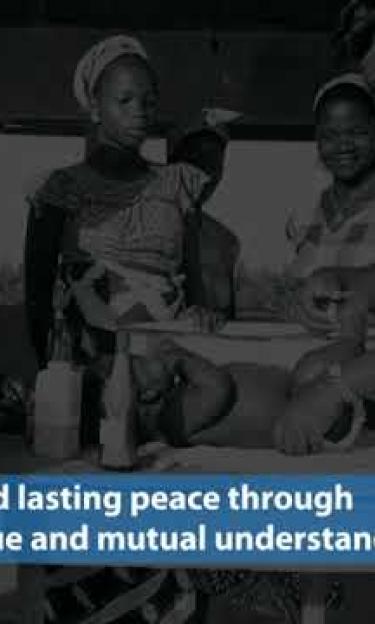
Related items
- Guidelines and tools
- Norms & Standards
- Programme implementation
- Sharing knowledge
- Girls education
- Access to education
- Adult education
- Capacity development for education
- Civic education
- Health education
- Educational management
- Educational technology
- Inclusive education
- Early childhood education
- Technical and vocational education
- Educational policy
- SDG: SDG 4 - Ensure inclusive and equitable quality education and promote lifelong learning opportunities for all
- See more add
What the Future of Education Looks Like from Here
- Posted December 11, 2020
- By Emily Boudreau
After a year that involved a global pandemic, school closures, nationwide remote instruction, protests for racial justice, and an election, the role of education has never been more critical or more uncertain. When the dust settles from this year, what will education look like — and what should it aspire to?
To mark the end of its centennial year, HGSE convened a faculty-led discussion to explore those questions. The Future of Education panel, moderated by Dean Bridget Long and hosted by HGSE’s Askwith Forums , focused on hopes for education going forward, as well as HGSE’s role. “The story of HGSE is the story of pivotal decisions, meeting challenges, and tremendous growth,” Long said. “We have a long history of empowering our students and partners to be innovators in a constantly changing world. And that is needed now more than ever.”
Joining Long were Associate Professor Karen Brennan , Senior Lecturer Jennifer Cheatham , Assistant Professor Anthony Jack, and Professors Adriana Umaña-Taylor and Martin West , as they looked forward to what the future could hold for schools, educators, and communities:
… After the pandemic subsides
The pandemic heightened existing gaps and disparities and exposed a need to rethink how systems leaders design schools, instruction, and who they put at the center of that design. “As a leader, in the years before the pandemic hit, I realized the balance of our work as practitioners was off,” Cheatham said. “If we had been spending time knowing our children and our staff and designing schools for them, we might not be feeling the pain in the way we are. I think we’re learning something about what the real work of school is about.” In the coming years, the panelists hope that a widespread push to recognize the identity and health of the whole-child in K–12 and higher education will help educators design support systems that can reduce inequity on multiple levels.
… For the global community
As much as the pandemic isolated individuals, on the global scale, people have looked to connect with each other to find solutions and share ideas as they faced a common challenge. This year may have brought everyone together and allowed for exchange of ideas, policies, practices, and assessments across boundaries.
… For technological advancements
As educators and leaders create, design, and imagine the future, technology should be used in service of that vision rather than dictating it. As technology becomes a major part of how we communicate and share ideas, educators need to think critically about how to deploy technology strategically. “My stance on technology is that it should always be used in the service of our human purpose and interest,” said Brennan. “We’ve talked about racial equity, building relationships. Our values and purposes and goals need to lead the way, not the tech.”
… For teachers
Human connections and interactions are at the heart of education. At this time, it’s become abundantly clear that the role of the teacher in the school community is irreplaceable. “I think the next few years hinge on how much we’re willing to invest in educators and all of these additional supports in the school which essentially make learning possible,” Umaña-Taylor said, “these are the individuals who are making the future minds of the nation possible.”
Cutting-edge research and new knowledge must become part of the public discussion in order to meaningfully shape the policies and practices that influence the future of education. “I fundamentally believe that we as academics and scholars must be part of the conversation and not limit ourselves to just articles behind paywalls or policy paragraphs at the end of a paper,” Jack said. “We have to engage the larger public.”
… In 25 years
“We shouldn’t underestimate the possibility that the future might look a lot like the present,” West said. “As I think about the potential sources of change in education, and in American education in particular, I tend to think about longer-term trends as the key driver.” Changing student demographics, access to higher education, structural inequality, and the focus of school leaders are all longer-term trends that, according to panelists, will influence the future of education.
Askwith Education Forum
Bringing innovators and influential leaders to the Harvard Graduate School of Education
Related Articles
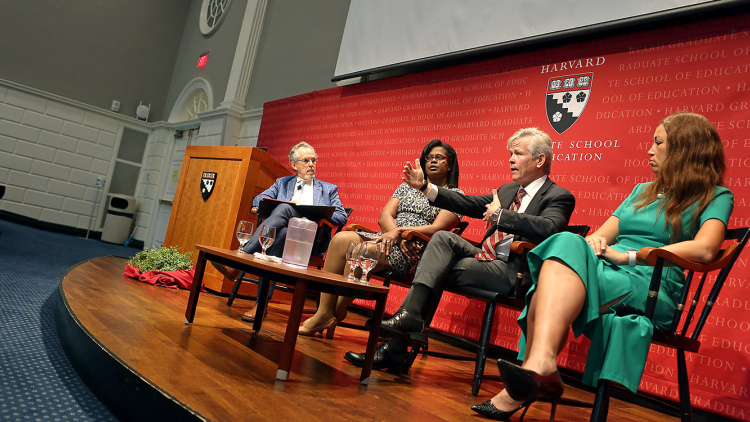
Beyond Recovery
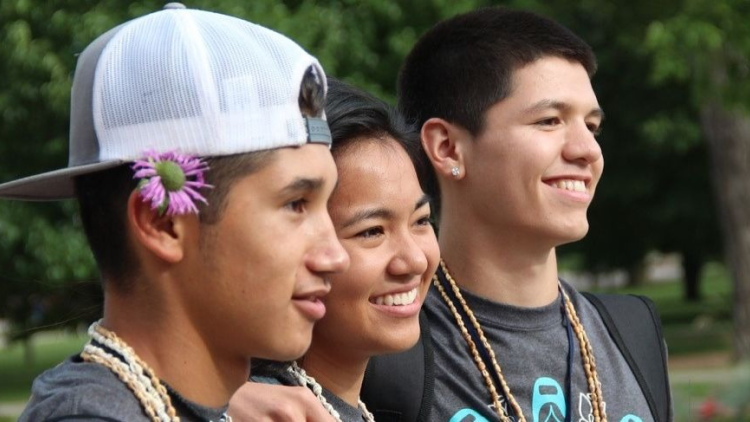
Future of Education: A New Vision for Higher Education in Indigenous Communities
An essential conversation with five indigenous scholars and education leaders as we search to bolster and secure the future of higher education for indigenous communities and deliver on the promise of education

Future of Education: Human Development and Psychology – The Long View
Types of Education Degrees for Future Educators

Teachers and other educators can make a profound impact on the lives of others, whether they’re working with a classroom of 5-year-olds, providing skills training to team members at a Fortune 500 company, or designing the curricula for a performing arts camp.
The field of education reaches far beyond the classroom, and individuals interested in working in education have numerous degrees and career paths to choose from. Education-related professions span everything from corporate trainers to camp directors to high school science teachers.
Additionally, different types of education degrees, such as a Master of Arts in Teaching (MAT), Master of Education (MEd), or a Doctorate of Education (EdD) can prepare graduates with in-demand expertise and skills. These include specialized knowledge pertaining to their major and soft skills such as communication skills, critical thinking skills, and time management skills that are transferable to a wide variety of careers in the public, private, nonprofit, and government sectors.
What Is the Field of Education?
Education isn’t limited to teaching positions. What the education field is encompasses a broad range of other career paths as well, in academic research, student development, and curriculum and policy design, among other areas. Students and professionals in this field are often drawn to positions that allow them to support the development and growth of others. Whether they want to work in an elementary school classroom or lead team-building retreats for a large company, job opportunities for education professionals are numerous.
Consequently, one of the first steps an individual should take toward a successful career in education is to determine which type of career path they’re most interested in pursuing. This will help ensure that they choose a degree program that matches their professional goals.
Why Get a Degree in Education? Education Degree Benefits
Students interested in pursuing a career in education have a variety of undergraduate degree programs to choose from, as there are multiple degrees applicable to the education sector. Whereas individuals interested in teaching history can start their educational journey by pursuing a bachelor’s degree in US or world history, those interested in working as a high school science teacher may choose to major in biology, chemistry, or physics.
Another education degree benefit is that individuals interested in pursuing leadership positions in the field can choose from numerous graduate programs, depending on their interests. Aspiring school psychologists may pursue a master’s in counseling, while those interested in teaching English literature at the college level may find that a master’s degree in English aligns better with their career goals.
Teaching Careers
Teachers are in demand. The US Bureau of Labor Statistics reports that employment of all educators, including preschool teachers, elementary school teachers, middle school teachers, high school teachers, and postsecondary teachers, is projected to grow by 10 percent between 2020 and 2030, which is about as fast as the job growth the BLS projects for all occupations during that period.
Approximately 920,500 new jobs are expected to be added during that reporting period. The BLS projects that student enrollment will increase in communities throughout the US and additional teachers will be needed to meet that demand.
Payscale reports that, as of June 2022, the median salary for teachers was approximately $50,200 annually, with earners in the top 10th percentile having a median salary of around $77,000 per year. Actual salaries vary depending on the teacher’s experience level, the geographical region of their position, whether they hold an advanced degree, and the school district they work for.
Most teachers work on-site at a school during the hours that students are present and have an eight- to 10-week break during the summer. They may also have short winter and spring breaks. Additionally, some teachers work evening and weekend hours to grade papers and prepare lesson plans.
Nonteaching Roles in Education
There are many types of education degrees, and teaching isn’t the only thing that graduates can do. One of the reasons why students get degrees in education is that there are many applicable career paths, including the following.
Admissions Counselor
Admissions counselors often work with colleges, universities, and private schools to recruit potential students. In addition to evaluating applications to ensure that applicants meet the institution’s enrollment requirements—such as GPA, residency, and educational background requirements—they also conduct applicant interviews, coordinate recruiting events, and organize classroom visits or campus tours.
Payscale reports that, as of June 2022, the median salary for admissions counselors was around $40,000 per year.
Tutors are private teaching instructors who work with students doing the following:
- Help students complete assignments and prepare for tests and exams
- Help students gain a broader understanding of new topics that have been introduced in the classroom
- Administer practice tests
- Provide progress reports to students and their parents
- Distribute additional teaching materials as needed
Although some tutors work with students one on one, others work with small groups.
High School Principal
High school principals oversee the day-to-day operations and activities of the schools they work for. Their specific tasks include the following:
- Ensure that academic policies, such as advanced placement (AP) class enrollment prerequisites and add/drop procedures for classes, are being met
- Develop academic benchmarks and benchmark tracking procedures
- Develop and oversee budgets
- Hire and train teachers and other staff
- Develop and implement policies pertaining to on-campus guest visits to ensure that staff, educators, and students remain safe
Payscale reports that, as of May 2022, the median salary for high school principals was approximately $91,800 per year.
Corporate Trainer
Corporate trainers aim to boost an organization’s productivity by providing skills training to employees. Training modules can cover a wide variety of topics, such as team communication, presentation strategies, emotional intelligence, conflict resolution, project management, leadership training, time management, and negotiation strategies. Some corporate trainers work full time for one organization, while others work with different companies for a set period of time as a consultant.
Payscale reports that, as of June 2022, the median base salary for corporate trainers was around $57,800 annually.
Camp Director
Camp directors oversee and manage the day-to-day operations and activities of day camps, sleep-away camps, and recreational camps. Typical job duties include the following:
- Hiring, training, and supervising staff
- Overseeing and managing budgets
- Designing curricula, including activities such as arts and crafts projects, campfire singalongs, and sports and recreation
- Ensuring that campers and staff adhere to safety regulations
- Leading presentations about the camp to current and potential campers and their families
Payscale reports that, as of April 2022, the median salary for camp directors was approximately $42,300 per year.
Education Consultant
Education consultants work at schools and higher education institutions in an advisory capacity. Their tasks include the following:
- Evaluate curricula and learning outcomes
- Analyze teacher and student performance results
- Advise on strategies designed to improve teaching methodologies
- Enhance the effectiveness of curricula
Although some professionals in this role work with educational consulting firms, some work as self-employed freelancers. Payscale reports that, as of May 2022, the median salary for education consultants was around $63,200 per year.
Types of Education Degrees
Students interested in pursuing education careers have many types of education degrees to choose from. For example, at the undergraduate level, students can choose to major in English, psychology, sociology, education, history, a foreign language, science, math, or engineering. Most bachelor’s degrees require students to complete approximately 120 credit hours of coursework prior to graduation, and most full-time students find they can complete their undergraduate studies in approximately four years.
Educators interested in pursuing leadership roles who are looking into master’s and doctoral degree programs can choose from several degree options as well, depending on their interests. Similar to the completion timeline for a baccalaureate degree, the time it takes to complete a master’s or doctoral degree can vary based on the credit hour requirement of the program they’re enrolled in and whether they’re enrolled as a part-time or full-time student.
Examples of postgraduate education degrees and their admissions requirements include the following:
Master of Arts in Teaching (MAT)
A Master of Arts in Teaching (MAT) degree program is an advanced degree program that’s designed to prepare future educators for both licensure and specialized career paths in the teaching profession. Credit hour requirements for MAT programs vary widely from school to school. Some programs require students to complete a minimum of 28 credit hours to be eligible to graduate, while other programs require as many as 42 credit hours.
Additionally, as MAT programs allow students to choose from a variety of specializations, some specializations require more credit hours than others. Specializations for MAT programs include the following:
- Early Childhood Education : This concentration prepares educators with advanced expertise in teaching methodologies for prekindergarten through third-grade classrooms.
- Elementary Education : This general education program specialization is designed for individuals interested in working with elementary school-aged children in grades one to six.
- Language Arts : This concentration teaches best practices for teaching the English language, including reading, writing, and literature studies.
- Mathematics : Teachers interested in gaining advanced knowledge and skills for teaching mathematics to students in grades five to 12 may find that a concentration in mathematics aligns best with their career goals.
- Middle School Education : This general education track is designed for teachers interested in working with students in grades four to eight.
- Science : A concentration in science prepares graduates to teach courses such as biology, earth and space science, chemistry, and physics.
- Secondary Education : Individuals who opt for this specialization will receive generalized knowledge in teaching subjects such as biological science, English, social sciences, and mathematics to students in grades nine to 12.
- Special Education : This specialization is designed for students interested in working with special needs students, such as those who have learning or physical disabilities.
Admissions Requirements for an MAT
The admissions requirements for Master of Arts in Teaching programs depend on the school. For example, some programs require applicants to submit GRE scores as part of their application packet, while others do not. Admissions requirements may include the following:
- A bachelor’s degree from an accredited institution, with undergraduate coursework in relevant topics for applicants in certain specializations
- A minimum undergraduate grade point average (GPA) or quality point average (QPA)
- Official college transcripts from all past colleges an applicant has attended
- One or more letters of recommendation
- A completed graduate school application
- An application fee
Master of Education in Education Policy and Leadership (MEd)
A Master of Education in Education Policy and Leadership (MEd) program is another type of graduate education degree program that prepares students to pursue leadership roles, such as school principal or school administrator, in schools and school districts, including charter schools, public schools, private schools, and parochial schools.
Learning objectives within this program cover topics such as monitoring student performance; developing short- and long-term plans for student achievement; creating diversity in learning programs for students from various ethnic or socioeconomic backgrounds and with different abilities. They also address designing strategies for allocating resources, such as budget and staff resources, to support student learning.
The curriculum of a Master of Education in Education Policy and Leadership program often includes courses such as Educational Leadership and Organizational Change, Education and Public Policy, Quantitative Research in Education, Education Law and Policy, and Education Program and Policy Implementation.
Similar to the credit hour requirement for a MAT degree, the credit hour requirement for a Master of Education in Education Policy and Leadership also varies from school to school. Some institutions require as few as 30 credit hours, while others require 40 credit hours or more.
Admissions Requirements for an MEd
The admissions requirements for a Master of Education in Education Policy and Leadership are similar to admissions requirements for other types of graduate degree programs. Requirements often include the following:
- A bachelor’s degree in a related field, such as English, science, mathematics, or history, from an accredited institution
- A minimum undergraduate GPA or QPA
- Official college transcripts from all past colleges and universities
- GRE scores may or may not be required depending on the institution
Doctor of Education in Education Policy and Leadership (EdD)
A Doctor of Education in Education Policy and Leadership (EdD) program is designed for students who have completed a master’s degree in a related field and are interested in gaining an advanced understanding of the issues that impact the nation’s public and private education systems at the local, state, and national level.
Throughout this type of education degree, students learn about how various laws and regulations, such as Title IX and the Individuals with Disabilities Education Act (IDEA), impact educational institutions; how to examine and evaluate issues in education from various perspectives; and how to make systemic changes designed to improve students’ educational journeys.
Coursework within EdD in Education Policy and Leadership programs often covers topics such as:
- Research methodologies
- Social Justice
- Systemic Change
- Diversity in Education
Most colleges and universities require students to complete 60 credit hours of coursework before they’ll be eligible to earn an EdD.
Admissions Requirements for an EdD
Similar to other types of advanced degree programs, the admissions requirements for a Doctor of Education in Education Policy and Leadership can vary depending on the institution. Typical requirements include the following:
- A master’s degree in an education-related field from an accredited college or university
- A minimum GPA or QPA, often 3.0 or above
- A minimum number of years of full-time work experience
- Leadership experience in an educational setting
- Letters of recommendation
- Official transcripts from every postsecondary institution previously attended
- A resume or CV
- A completed application
Pursue Your Dream and Shape Lives as an Educator
Students interested in pursuing a bachelor’s, master’s, or doctoral degree in education must start by narrowing down the career path they’re most interested in pursuing. From there, they can evaluate degree programs to determine which academic institution and which major is best for them. An important step when evaluating potential colleges and universities is to ensure that both the school and the program are accredited.
American University offers an Online Master of Arts in Teaching (MAT) , Online Master of Education in Education Policy and Leadership (MEd) , and Online EdD in Education Policy and Leadership for students looking to take the next step in their careers. Each program is rooted in inclusive, anti-racist pedagogy and contemporary methods to create lasting improvement in education. Students can benefit from intentional curricula to prepare them for all types of educational careers.
Are you ready to take the next step forward in your educational journey? Discover how earning a degree in education can prepare you for the professional future you want.
Incorporating Social Justice Children’s Books Into Curricula
The Importance of Promoting Digital Citizenship for Students
How to Incorporate Mindfulness in the Classroom
Betterteam, Camp Director Job Description
Betterteam, Corporate Trainer Job Description
Betterteam, Educational Consultant Job Description
Houston Chronicle, “Types of Jobs in Education”
Indeed, “17 Career Opportunities in Education Besides Teaching”
Indeed, “How to Become an Admissions Counselor”
Indeed, “Popular Careers in Education You Can Pursue”
Indeed, Principal Job Description: Top Duties and Qualifications
Indeed, Tutor Job Description: Top Duties and Qualifications
Payscale, Average Admissions Counselor Salary
Payscale, Average Camp Director Salary
Payscale, Average Corporate Trainer Salary
Payscale, Average Education Consultant Salary
Payscale, Average High School Principal Salary
Payscale, Average Teacher Salary
Payscale, Average Tutor Hourly Pay
US Bureau of Labor Statistics, Education, Training, and Library Occupations
US Bureau of Labor Statistics, High School Teachers
Request Information
- Our Mission
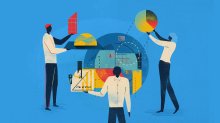
The 10 Most Significant Education Studies of 2021
From reframing our notion of “good” schools to mining the magic of expert teachers, here’s a curated list of must-read research from 2021.
It was a year of unprecedented hardship for teachers and school leaders. We pored through hundreds of studies to see if we could follow the trail of exactly what happened: The research revealed a complex portrait of a grueling year during which persistent issues of burnout and mental and physical health impacted millions of educators. Meanwhile, many of the old debates continued: Does paper beat digital? Is project-based learning as effective as direct instruction? How do you define what a “good” school is?
Other studies grabbed our attention, and in a few cases, made headlines. Researchers from the University of Chicago and Columbia University turned artificial intelligence loose on some 1,130 award-winning children’s books in search of invisible patterns of bias. (Spoiler alert: They found some.) Another study revealed why many parents are reluctant to support social and emotional learning in schools—and provided hints about how educators can flip the script.
1. What Parents Fear About SEL (and How to Change Their Minds)
When researchers at the Fordham Institute asked parents to rank phrases associated with social and emotional learning , nothing seemed to add up. The term “social-emotional learning” was very unpopular; parents wanted to steer their kids clear of it. But when the researchers added a simple clause, forming a new phrase—”social-emotional & academic learning”—the program shot all the way up to No. 2 in the rankings.
What gives?
Parents were picking up subtle cues in the list of SEL-related terms that irked or worried them, the researchers suggest. Phrases like “soft skills” and “growth mindset” felt “nebulous” and devoid of academic content. For some, the language felt suspiciously like “code for liberal indoctrination.”
But the study suggests that parents might need the simplest of reassurances to break through the political noise. Removing the jargon, focusing on productive phrases like “life skills,” and relentlessly connecting SEL to academic progress puts parents at ease—and seems to save social and emotional learning in the process.
2. The Secret Management Techniques of Expert Teachers
In the hands of experienced teachers, classroom management can seem almost invisible: Subtle techniques are quietly at work behind the scenes, with students falling into orderly routines and engaging in rigorous academic tasks almost as if by magic.
That’s no accident, according to new research . While outbursts are inevitable in school settings, expert teachers seed their classrooms with proactive, relationship-building strategies that often prevent misbehavior before it erupts. They also approach discipline more holistically than their less-experienced counterparts, consistently reframing misbehavior in the broader context of how lessons can be more engaging, or how clearly they communicate expectations.
Focusing on the underlying dynamics of classroom behavior—and not on surface-level disruptions—means that expert teachers often look the other way at all the right times, too. Rather than rise to the bait of a minor breach in etiquette, a common mistake of new teachers, they tend to play the long game, asking questions about the origins of misbehavior, deftly navigating the terrain between discipline and student autonomy, and opting to confront misconduct privately when possible.
3. The Surprising Power of Pretesting
Asking students to take a practice test before they’ve even encountered the material may seem like a waste of time—after all, they’d just be guessing.
But new research concludes that the approach, called pretesting, is actually more effective than other typical study strategies. Surprisingly, pretesting even beat out taking practice tests after learning the material, a proven strategy endorsed by cognitive scientists and educators alike. In the study, students who took a practice test before learning the material outperformed their peers who studied more traditionally by 49 percent on a follow-up test, while outperforming students who took practice tests after studying the material by 27 percent.
The researchers hypothesize that the “generation of errors” was a key to the strategy’s success, spurring student curiosity and priming them to “search for the correct answers” when they finally explored the new material—and adding grist to a 2018 study that found that making educated guesses helped students connect background knowledge to new material.
Learning is more durable when students do the hard work of correcting misconceptions, the research suggests, reminding us yet again that being wrong is an important milestone on the road to being right.
4. Confronting an Old Myth About Immigrant Students
Immigrant students are sometimes portrayed as a costly expense to the education system, but new research is systematically dismantling that myth.
In a 2021 study , researchers analyzed over 1.3 million academic and birth records for students in Florida communities, and concluded that the presence of immigrant students actually has “a positive effect on the academic achievement of U.S.-born students,” raising test scores as the size of the immigrant school population increases. The benefits were especially powerful for low-income students.
While immigrants initially “face challenges in assimilation that may require additional school resources,” the researchers concluded, hard work and resilience may allow them to excel and thus “positively affect exposed U.S.-born students’ attitudes and behavior.” But according to teacher Larry Ferlazzo, the improvements might stem from the fact that having English language learners in classes improves pedagogy , pushing teachers to consider “issues like prior knowledge, scaffolding, and maximizing accessibility.”
5. A Fuller Picture of What a ‘Good’ School Is
It’s time to rethink our definition of what a “good school” is, researchers assert in a study published in late 2020. That’s because typical measures of school quality like test scores often provide an incomplete and misleading picture, the researchers found.
The study looked at over 150,000 ninth-grade students who attended Chicago public schools and concluded that emphasizing the social and emotional dimensions of learning—relationship-building, a sense of belonging, and resilience, for example—improves high school graduation and college matriculation rates for both high- and low-income students, beating out schools that focus primarily on improving test scores.
“Schools that promote socio-emotional development actually have a really big positive impact on kids,” said lead researcher C. Kirabo Jackson in an interview with Edutopia . “And these impacts are particularly large for vulnerable student populations who don’t tend to do very well in the education system.”
The findings reinforce the importance of a holistic approach to measuring student progress, and are a reminder that schools—and teachers—can influence students in ways that are difficult to measure, and may only materialize well into the future.
6. Teaching Is Learning
One of the best ways to learn a concept is to teach it to someone else. But do you actually have to step into the shoes of a teacher, or does the mere expectation of teaching do the trick?
In a 2021 study , researchers split students into two groups and gave them each a science passage about the Doppler effect—a phenomenon associated with sound and light waves that explains the gradual change in tone and pitch as a car races off into the distance, for example. One group studied the text as preparation for a test; the other was told that they’d be teaching the material to another student.
The researchers never carried out the second half of the activity—students read the passages but never taught the lesson. All of the participants were then tested on their factual recall of the Doppler effect, and their ability to draw deeper conclusions from the reading.
The upshot? Students who prepared to teach outperformed their counterparts in both duration and depth of learning, scoring 9 percent higher on factual recall a week after the lessons concluded, and 24 percent higher on their ability to make inferences. The research suggests that asking students to prepare to teach something—or encouraging them to think “could I teach this to someone else?”—can significantly alter their learning trajectories.
7. A Disturbing Strain of Bias in Kids’ Books
Some of the most popular and well-regarded children’s books—Caldecott and Newbery honorees among them—persistently depict Black, Asian, and Hispanic characters with lighter skin, according to new research .
Using artificial intelligence, researchers combed through 1,130 children’s books written in the last century, comparing two sets of diverse children’s books—one a collection of popular books that garnered major literary awards, the other favored by identity-based awards. The software analyzed data on skin tone, race, age, and gender.
Among the findings: While more characters with darker skin color begin to appear over time, the most popular books—those most frequently checked out of libraries and lining classroom bookshelves—continue to depict people of color in lighter skin tones. More insidiously, when adult characters are “moral or upstanding,” their skin color tends to appear lighter, the study’s lead author, Anjali Aduki, told The 74 , with some books converting “Martin Luther King Jr.’s chocolate complexion to a light brown or beige.” Female characters, meanwhile, are often seen but not heard.
Cultural representations are a reflection of our values, the researchers conclude: “Inequality in representation, therefore, constitutes an explicit statement of inequality of value.”
8. The Never-Ending ‘Paper Versus Digital’ War
The argument goes like this: Digital screens turn reading into a cold and impersonal task; they’re good for information foraging, and not much more. “Real” books, meanwhile, have a heft and “tactility” that make them intimate, enchanting—and irreplaceable.
But researchers have often found weak or equivocal evidence for the superiority of reading on paper. While a recent study concluded that paper books yielded better comprehension than e-books when many of the digital tools had been removed, the effect sizes were small. A 2021 meta-analysis further muddies the water: When digital and paper books are “mostly similar,” kids comprehend the print version more readily—but when enhancements like motion and sound “target the story content,” e-books generally have the edge.
Nostalgia is a force that every new technology must eventually confront. There’s plenty of evidence that writing with pen and paper encodes learning more deeply than typing. But new digital book formats come preloaded with powerful tools that allow readers to annotate, look up words, answer embedded questions, and share their thinking with other readers.
We may not be ready to admit it, but these are precisely the kinds of activities that drive deeper engagement, enhance comprehension, and leave us with a lasting memory of what we’ve read. The future of e-reading, despite the naysayers, remains promising.

9. New Research Makes a Powerful Case for PBL
Many classrooms today still look like they did 100 years ago, when students were preparing for factory jobs. But the world’s moved on: Modern careers demand a more sophisticated set of skills—collaboration, advanced problem-solving, and creativity, for example—and those can be difficult to teach in classrooms that rarely give students the time and space to develop those competencies.
Project-based learning (PBL) would seem like an ideal solution. But critics say PBL places too much responsibility on novice learners, ignoring the evidence about the effectiveness of direct instruction and ultimately undermining subject fluency. Advocates counter that student-centered learning and direct instruction can and should coexist in classrooms.
Now two new large-scale studies —encompassing over 6,000 students in 114 diverse schools across the nation—provide evidence that a well-structured, project-based approach boosts learning for a wide range of students.
In the studies, which were funded by Lucas Education Research, a sister division of Edutopia , elementary and high school students engaged in challenging projects that had them designing water systems for local farms, or creating toys using simple household objects to learn about gravity, friction, and force. Subsequent testing revealed notable learning gains—well above those experienced by students in traditional classrooms—and those gains seemed to raise all boats, persisting across socioeconomic class, race, and reading levels.
10. Tracking a Tumultuous Year for Teachers
The Covid-19 pandemic cast a long shadow over the lives of educators in 2021, according to a year’s worth of research.
The average teacher’s workload suddenly “spiked last spring,” wrote the Center for Reinventing Public Education in its January 2021 report, and then—in defiance of the laws of motion—simply never let up. By the fall, a RAND study recorded an astonishing shift in work habits: 24 percent of teachers reported that they were working 56 hours or more per week, compared to 5 percent pre-pandemic.
The vaccine was the promised land, but when it arrived nothing seemed to change. In an April 2021 survey conducted four months after the first vaccine was administered in New York City, 92 percent of teachers said their jobs were more stressful than prior to the pandemic, up from 81 percent in an earlier survey.
It wasn’t just the length of the work days; a close look at the research reveals that the school system’s failure to adjust expectations was ruinous. It seemed to start with the obligations of hybrid teaching, which surfaced in Edutopia ’s coverage of overseas school reopenings. In June 2020, well before many U.S. schools reopened, we reported that hybrid teaching was an emerging problem internationally, and warned that if the “model is to work well for any period of time,” schools must “recognize and seek to reduce the workload for teachers.” Almost eight months later, a 2021 RAND study identified hybrid teaching as a primary source of teacher stress in the U.S., easily outpacing factors like the health of a high-risk loved one.
New and ever-increasing demands for tech solutions put teachers on a knife’s edge. In several important 2021 studies, researchers concluded that teachers were being pushed to adopt new technology without the “resources and equipment necessary for its correct didactic use.” Consequently, they were spending more than 20 hours a week adapting lessons for online use, and experiencing an unprecedented erosion of the boundaries between their work and home lives, leading to an unsustainable “always on” mentality. When it seemed like nothing more could be piled on—when all of the lights were blinking red—the federal government restarted standardized testing .
Change will be hard; many of the pathologies that exist in the system now predate the pandemic. But creating strict school policies that separate work from rest, eliminating the adoption of new tech tools without proper supports, distributing surveys regularly to gauge teacher well-being, and above all listening to educators to identify and confront emerging problems might be a good place to start, if the research can be believed.
Welcome to the BETA TCSI Support site. We would value your feedback.

Report data
- Report Higher Education Student -->
- Report Higher Education Staff -->
- Report VET Student Loans -->
- Report University Apps & Offers -->
- Report TEQSA data -->
- Ministerial and Secretary's notices -->
- Data Frameworks -->
- TCSI mapping tables -->
- Reading Notifications -->
- Higher education collections (HESA approved) -->
- VET Student Loans collection -->
- TEQSA Provider Information Request -->
- View validation errors -->
- View scheduled validation errors -->
- Read and correct validation errors -->
- Higher education file templates -->
- VET Student Loans file templates -->
- Provider Information Request (PIR) file templates -->
- Video demonstrations -->
- For API users -->
- For TCSI Data Entry users -->
Field of Education Types
Natural and Physical Sciences is the study of all living organisms and inanimate natural objects, through experiment, observation and deduction.
The theoretical content of Broad Field 01 Natural and Physical Sciences includes:
- atmospheric sciences
- biological processes
- chemical reactions
- geological composition and structures
- laboratory methodology
- mathematical and statistical techniques
- observation and measurement
- scientific method
- subatomic particles and quantum mechanics
- thermodynamics and entropy
The main purpose of this broad field of education is to develop an understanding of the workings of the universe, and to extend the body of scientific knowledge.
This broad field comprises the following narrow fields:
Information Technology is the study of the processing, transmitting and storage of information by computers.
The theoretical content of Broad Field 02 Information Technology includes:
- computation theory
- computer programming
- data format and coding
- management, storage and retrieval of information in a computer environment
- robotics programming and artificial intelligence
- systems analysis
The main purpose of this broad field of education is to develop an understanding of information systems, programming languages, information management and artificial intelligence, the ability to apply them to solve problems.
Exclusions: Computer hardware design and construction. This is included in Detailed Field 031305 Computer Engineering. Computer operation and using software packages. This is included in Detailed Field 080905 Practical Computing Skills.
Engineering and Related Technologies is the study of the design, manufacture, installation, maintenance and functioning of machines, products, systems and structures; and the composition and processing of metals, ceramics, foodstuffs and other materials. It includes the measurement and mapping of the earth's surface and its natural and constructed features.
The theoretical content of Broad Field 03 Engineering and Related Technologies includes:
- aeronautics
- engineering and manufacturing technology
- food technology
- land information technology and remote sensing
- materials science
- principles of design and drafting, planning and commissioning
- plant and machine maintenance
The main purpose of this broad field of education is to develop an understanding of the conversion of materials and energy, and the measurement and representation of objects, and the operation of plant, machinery and transport systems.
Exclusions: Architecture and building. This is included in Broad Field 04 Architecture and Building.
Architecture and Building is the study of the art, science and techniques involved in designing, constructing, adapting and maintaining public, commercial, industrial and residential structures and landscapes. It includes the study of the art and science of designing and planning urban and regional environments.
The theoretical content of Broad Field 04 Architecture and Building includes:
- aesthetics and space dynamics
- building economics
- building science
- building techniques and technologies
- construction management
- architectural design and drawing
- town planning
The main purpose of this broad field of education is to provide an understanding of integrating structural and aesthetic elements in buildings, and construction methods, techniques and materials.
This field comprises the following narrow fields:
Agriculture, Environmental and Related Studies is the study of the theory and practice of breeding, growing, gathering, reproducing and caring for plants and animals. It includes the study of the interaction between people and the environment and the application of scientific knowledge to the environment to protect it from deterioration.
The theoretical content of Broad Field 05 Agriculture, Environmental and Related Studies includes:
- crop production
- animal production and management
- environmental impact and assessment
- forestry resources management
- soil and water conservation
- aquatic resource management
The main purpose of this broad field of education is to develop an understanding of the management and use of natural resources, and the production of primary agricultural products.
Exclusions: Veterinary science. This is included in Narrow Field 0611 Veterinary Science.
Health is the study of maintaining and restoring the physical and mental well‑being of humans and animals.
The theoretical content of Broad Field 06 Health includes:
- disease processes and mechanisms
- restoration and maintenance of health
- principles and practices of public health
The main purpose of this broad field of education is to develop an understanding of the principles and practices of identifying, treating, controlling and preventing injury and diseases. It is also involves developing an understanding of the principles and practices of providing preventative, curative, rehabilitative and palliative care.
Exclusions: Medical Science. This is included in Detailed Field 019901 Medical Science.
Education is the study of the process of learning. It includes the theories, methods and techniques of imparting knowledge and skills to others.
The theoretical content of Broad Field 07 Education includes:
- curriculum development
- processes of learning and skill acquisition
- teaching methods
The main purpose of this broad field of education is to develop an understanding of the processes and methods of teaching and learning in pre‑schools, schools, tertiary educational institutions and informal settings.
Management and Commerce is the study of the theory and practice of planning, directing, organising, motivating and co‑ordinating the human and material resources of private and public organisations and institutions. It includes the merchandising and provision of goods and services and personal development.
The theoretical content of Broad Field 08 Management and Commerce includes:
- management and administration
- human and material resources management
- sales and marketing
- finance and financial management
- human behaviour and time management
The main purpose of this broad field of education is to develop an understanding of the theory and practice of decision making and policy formation, organisational development, planning, financial management and the marketing and selling of goods and services.
This narrow field comprises the following narrow fields:
Society and Culture is the study of the physical, social and cultural organisation of human society and their influence on the individual and groups.
The theoretical content of Broad Field 09 Society and Culture includes:
- belief and value systems
- cultural expression
- human development and behaviour
- human populations and their environments
- politics of power
- social organisation and structure
- social research methodology
The main purpose of this broad field of education is to develop an understanding of human behaviour and interaction, beliefs and values, cultural expression, and social structure and organisation.
Creative Arts is the study of creating and performing works of art, music, dance and drama. It includes the study of clothing design and creation, and the communication of messages in a variety of media.
The theoretical content of Broad Field 10 Creative Arts includes:
- artistic and technical aspects of audio‑visual communication
- artistic and technical aspects of the creation and production of art and craft, photographs and fashion apparel
- artistic and technical aspects of the creation, production and performance of music, dance and drama
- history, development and theory of the visual and performing arts
The main purpose of this broad field of education is to develop an understanding of composition, performance, artistic production, choreography, design and creativity and technical production.
Exclusions: Mass production of products such as fashion apparel, woven materials, pottery and furniture. These are included in Narrow Field 0301 Manufacturing Engineering and Technology. Computer graphics: This is included in Narrow Field 0201 Computer Science.
Food, Hospitality and Personal Services is the study of preparing, displaying and serving food and beverages, providing hospitality services, caring for the hair and body for grooming and beautification and other personal services.
The theoretical content of Broad Field 11 Food, Hospitality and Personal Services includes:
- application and use of skin care and cosmetic products
- general beauty care
- hair cutting, styling, colouring and treatment techniques
- housekeeping
- hygienic work practices in relation to the food and hospitality industry
- preparation, display and service of food and beverages
The main purpose of this broad field of education is to develop an understanding of the preparation of food and beverages, and the provision of hospitality services including housekeeping, cleaning and food and beverage service. It also involves developing a knowledge of beautification and beauty treatments.
This narrow filed comprises the following narrow fields:
Exclusions: Massage. This is included in Detailed Field 061711 Massage Therapy.
Mixed Field Programs are programs providing general and personal development education.
The theoretical content of Broad Field 12 Mixed Field Programs includes:
- literacy and numeracy skills
- personal, social and workplace relationships
The main purpose of this broad field of education is to develop a basic understanding of reading, writing and arithmetic along with an elementary understanding of other subjects such as history, geography, natural science, social science, art and music. It also involves developing an understanding of key competencies and skills that are needed for job search activities, employment and personal survival skills.
Exclusions Personal management training. This is included in Detailed Field 080305 Personal Management Training.
Rick Hess Straight Up
Education policy maven Rick Hess of the American Enterprise Institute think tank offers straight talk on matters of policy, politics, research, and reform. Read more from this blog.
‘Jargon’ and ‘Fads': Departing IES Chief on State of Ed. Research

- Share article
Just last month, Mark Schneider wrapped up his six-year term as the director of the Institute of Education Sciences. At IES, he was charged with overseeing the nation’s education research efforts, including such well-known efforts as the National Assessment of Educational Progress and the What Works Clearinghouse. Before assuming his role at IES, Mark was a vice president at the American Institutes for Research, commissioner at the National Center for Education Statistics, and spent many years chairing the political science department at SUNY-Stony Brook. Having known Mark for many, many years, I was interested in his reflections on his tenure at IES. Here’s what he had to say. (This is Part One of a two-part interview, the second of which is scheduled to be published on Wednesday.)
Rick: You’ve just wrapped up your tenure as director of the Institute of Education Sciences. What’s the state of American educational research?
Mark: When I was a political science professor at Stony Brook University, fights over resources often pitted the “hard sciences” against the social sciences. At faculty meetings, I would use James March’s observation that “God gave all the easy problems to the physicists.” That would lead to plenty of eye-rolling from everyone but the social science chairs and faculty. But the fact is that humans have far more agency than electrons, and so many of our most beautiful and parsimonious models crash and burn when tested against real-world data. Our work is difficult, and we need to face the reality that most of our ideas, hypotheses, and interventions will not stand up to empirical reality. Indeed, IES-supported interventions have a “hit rate” that hovers around 15 percent, meaning most things don’t work. Depressing, but that success rate is not much different from most other human-centered fields. Indeed, by some estimates , only 10 percent of clinical trials succeed.
Over its 20-year history, IES has developed and perfected a standard “business model.” I summarize it as: “Five years, five million dollars, failure,” which reflects our standard grant length, funding level, and outcome. This may sound like an indictment of how IES has supported the education research “industry,” but we need to understand the reality we face. And we need to embrace the idea that “the only failure in failure is the failure to learn.”
Rick: Given the challenges you’ve just sketched, how have you sought to shift IES efforts?
Mark: I have tried to push IES to change its standard business model. Most notably, there are now a growing number of large learning platforms—IES’s SEERNet among them—that let researchers access large numbers of students, enable rapid-cycle experiments, and support more frequent replications. IES’s mission is to determine “what works for whom under what conditions.” This can only be achieved by replicating work in different audiences as a routine part of our research. Of course, other sciences have supported replications for years. Many now face a “replication crisis,” in which other research teams—or even the research team that conducted the original study—cannot verify findings. We have not been pursuing replication work long enough to generate a replication crisis in our field, but I look forward to that day.
The field is also beginning to face the problem that even after we identify practices and programs that “work,” we do not scale those interventions by moving from, say, 200 students in an experiment to 2,000 students in a school district to 2 million students in the nation. Without paying far more attention to scaling, we will never affect enough students to achieve our goal of creating a strong democratic citizenry capable of earning family-sustaining wages.
Rick: As director, what’s been your biggest frustration with the education research community?
Mark: Education science, like many disciplines, is overly affected by jargon and fads. We are an applied science charged by law with helping legislators, educators, parents, and students understand what we are saying and how to join us in implementing changes. But we often fail to translate our work into plain, accessible English. I have tried to impose several policies to make IES’s publications and reports more user-friendly—for instance, by imposing a 15-page limit on our reports. But perhaps the biggest indictment of the field is that the writing in education research reports, including IES’s own, is often amazingly poor.
“Short sentences. Strong verbs.” That’s the approach I ask people to bring to their writing, yet we rarely hit the mark. Perhaps the problem is that so many IES staff and contractors have Ph.D.s, so they think a greater number of poorly crafted reports is better than fewer tightly focused ones. As a result, our journals drip with incomprehensible jargon and big words that signify little.
Rick: What kinds of changes could help on this count?
Mark: For several years, I have been pushing for the creation of a new center in IES focused on informed risk, high reward, and rapid-cycle research. Like the establishment of centers throughout the federal government modeled on the Defense Advanced Research Projects Agency, or DARPA, the new IES center—currently called the National Center for Advanced Development in Education, or NCADE—would breathe life into a large segment of IES’s research expenditures. The creation of NCADE would require an act of Congress.
We also need to continue updating the SEER principles . The Standards for Excellence in Education Research lay out some best practices that would guide the education science field to produce stronger work, plus some principles that are specific to education science research. Should the next director continue to refine these, I believe that our field will be far better off than it was earlier in IES’s life—and even more so when comparing the quality and the rigor of today’s work with that of the pre-2002, pre-IES world.
Rick: You argue eloquently for new research centers within IES. But IES already has four of them. What makes you confident that a new one, NCADE, would fare any better? Put another way, why can’t the existing centers just do the research that you’d ask NCADE to do?
Mark : This is the hardest question to grapple with when considering the need for NCADE. I sometimes think that if COVID hadn’t punched a two-year hole in my tenure, I might have been able to make enough changes in the culture and the practices of IES’s two existing research centers to alleviate the need for NCADE. But changes in personnel, practices, and especially culture in a federal bureaucracy, even a relatively small one such as IES, are among the most persistent challenges any reform-minded leader faces.
I can document many barriers that are just hard to overcome. It is not surprising that a time-honored solution to such inertia is to create a new bureaucracy in which modern practices and new personnel can be brought in to drive new initiatives. On an abstract level, do we really need NCADE? Maybe not. But if we want to modernize and streamline education science research, NCADE is, I believe, the best and fastest way to bring about changes the field—and the nation—needs.
Rick: You’ve made a priority of accelerating the speed at which we release federal education data and research. What’s the problem and what’s holding up efforts to do better?
Mark: The lack of timeliness is the single most common complaint that IES fields year after year. Many of these complaints come directly from Congress. Indeed, when the Senate HELP Committee drafted a reauthorization of the Education Sciences Reform Act, the senators added a new paragraph about the responsibilities of each commissioner with the same title: “timeliness.” Our research centers, for instance, are largely focused on measuring how students grow and learn—which can take years. On top of that, we often fail to push for timely publications and product development once that research is complete.
Meanwhile, IES’s National Center for Education Statistics, or NCES, has other problems that slow down the release of its work. Officials at NCES argue that they simply don’t have enough staff to produce timely products. And maybe they don’t. But they also do not seem to understand their audience’s need for access to fast and reliable information.
Researchers like Marguerite Roza, Emily Oster, and Sean Reardon are helping to fill in the gap by standing up work that NCES could and should do. The signature example is how slow NCES has been in releasing critically needed information on how schools and districts are spending money. There will always be a lag between data collection after a fiscal year ends until it can be released—but the lag has often been years rather than months. I don’t think that’s a result of limited staffing. I think it’s a result of limited vision.
Part of my push for NCADE has been to break the mindset of too many IES staffers and to bring in new blood committed to identifying critical shortages in education research and pushing for more rapid solutions, including greater sensitivity to the needs of research consumers—which would almost always mean faster turnaround.
The opinions expressed in Rick Hess Straight Up are strictly those of the author(s) and do not reflect the opinions or endorsement of Editorial Projects in Education, or any of its publications.
Sign Up for EdWeek Update
Edweek top school jobs.

Sign Up & Sign In

- The Education Gradebook
Pinellas schools are sending thousands more kids on field trips this year
- Jeffrey S. Solochek Times staff
ST. PETERSBURG — Dozens of Midtown Academy fourth graders and their chaperones poured out of two school buses outside the James Museum of Western and Wildlife Art, chattering as they lined up in pre-assigned groups.
They hushed as they entered the cavernous sculpture arroyo that welcomes visitors, pausing for selfies before an indoor waterfall. They sat through a brief welcome in the museum auditorium, then headed out to experience the art.
For most of the kids, it was their third or fourth field trip of the year. And they couldn’t have been happier.
“I like going on field trips,” said Brinley Brown, 10, as she watched her classmates try on some of the western wear that docent Chuck Duritsch displayed. “It’s fun. You get to learn a lot of new things. You get to go out of school. … You can’t always picture it without a field trip.”
That’s the reaction Pinellas County school superintendent Kevin Hendrick hoped for when he set a goal of getting students more engaged through hands-on activities. During the pandemic, many children lost interest as classes moved online and then, upon their return, everyone had to keep their distance because of ongoing health concerns.
Many extra events that held students’ attention were curtailed. Attendance fell as families took advantage of Florida’s growing number of other education options.
Hendrick made it clear that the district needed to do more to bring students back. To him, that meant giving them a reason to be there beyond sitting in a classroom listening to lessons. He promoted clubs, sports and academic competitions. He even created a new position in his leadership team to oversee the initiative, the director of student experience.
“So many people talk about attendance, and that there’s an attendance crisis ,” Hendrick said. “You don’t get out of that by creating policy and talking about it.”
The answer lies in giving children something to look forward to, he contended. And field trips are an important feature of that effort.
This school year, the district has received field trip requests for 15,000 more students than a year ago, student experience director Kim Hill said. Funding comes from a variety of sources, including the district’s property tax referendum and federal pandemic relief money.
Hill said her office is working on a system to track the data, while continuing to provide opportunities for all students. It’s a district priority, she added: “There is power in going off campus.”
There’s research to back that up.
Heidi Erickson, an assistant professor of education leadership at Brigham Young University, studied randomly selected groups of students from an Atlanta school district to gauge the effects of going on field trips. One group took three trips to cultural institutions, while another stayed in school.
Over time, Erickson said, the students who went on the field trips performed better academically, with fewer disciplinary issues and more tolerance for others. The results were statistically strong enough to suggest a cause-effect relationship, she said, though she added that the reason was less clear.
One theory is that students associated school with positive activities that encouraged them to work harder, she said.
“Overall, field trips are a relatively low-cost and easy intervention or activity to advance students’ educational experience,” Erickson said. “I think schools should embrace it more.”
Midtown Academy art teacher Sarah O’Donoghue said bringing students to a museum excites them about art in a way that showing them reproductions and reprints in class can’t. It also provides ideas for when they get back to school, such as creating their own pieces based on what they saw.
It might be tough keeping all the kids together or getting a bus for the trip — lead time of at least a month is needed. “But it’s OK, because they love it,” O’Donoghue said.
She didn’t mind, for instance, when Daekota Brown, 9, wandered away from the group to take in the art on her own terms.
“I don’t always like staying with the crowd,” Daekota explained, as she effused over the brush strokes and shadowing on paintings. “I like quiet spaces.”
It also was just fine that Jayce Nettles, 10, toured the exhibits with smartphone in hand, recording all he could until the battery ran out. From his teacher’s perspective, Jayce was appreciating the museum for the future.
“It’s beautiful and looks great,” Jayce said, adding that the video was “so I can capture the moment and share it with my family.”
Expanding children’s worldview is a key field trip selling point for Thomas Myers, a math teacher at Thurgood Marshall Fundamental Middle School. He escorted 25 sixth, seventh and eighth graders to USF’s St. Petersburg campus and the Grand Prix of St. Petersburg as part of a science and engineering field trip in March, just before spring break.
Students from Bay Point and John Hopkins middle schools also attended the trip, which was supported by the city of St. Petersburg.
“It’s extremely important as they’re growing up and figuring out what they want to do and where they fit into the world,” Myers said as he watched students compete in a computer-assisted design competition to create logos for the race.
His colleague, science teacher Amy Greth, said the students clearly enjoyed seeing how some of the lessons they get in school have practical applications.
“I prefer this classroom every day,” Greth said as she watched the students experiment with 3D printers, electronic circuits and virtual reality goggles in the USF library maker station.
She praised the school district for making a concerted effort to send students on more field trips. “Everywhere I take them, they are excited about it.”
Angela Truong, who has three children in the district, chaperoned the trip with her eighth grade son Alex Nguyen. She, too, said schools should provide as many field trips as possible because they keep children interested in what they’re learning.
“The kids look forward to it, and it’s something they remember,” Truong said. “My youngest is still talking about his trip to the fire station from kindergarten.”
Her son Alex agreed.
“Instead of being stuck in the classroom, you can go explore,” he said, while waiting to head to the race paddock to meet with pit crews and drivers. “I like seeing how things are built and how they function. It’s better to see in person than in a picture.”
For sixth grader Jordynn Shelby, field trips provide a needed diversion to keep her attention. “I get really bored sitting in a class every day,” she said while eating lunch at one of USF’s cafeterias, which she said was much better than school lunch. “This is a funner way to learn.”
Her classmate, Marley Larkin, said she had never been to a car race before. She welcomed more new experiences, suggesting one every grading period would be about right. Without knowing it, she echoed the superintendent.
“It’s something to look forward to,” Marley said. “Everyone likes field trips.”
Jeffrey S. Solochek is an education reporter covering K-12 education policy and schools. Reach him at [email protected].
MORE FOR YOU
- Advertisement
ONLY AVAILABLE FOR SUBSCRIBERS
The Tampa Bay Times e-Newspaper is a digital replica of the printed paper seven days a week that is available to read on desktop, mobile, and our app for subscribers only. To enjoy the e-Newspaper every day, please subscribe.

Bachelor of Science
Early Childhood/Childhood Education
Become a teacher: help young children learn and grow.
Prepare to become a positive influence in the lives of early learners. In the early childhood/childhood education bachelor’s program at UAlbany, you’ll learn how to teach young children and elementary students by developing the core educational knowledge you need to become a teacher.
The coursework will support your intellectual curiosity while covering subjects such as child development, teaching methods, social and cultural contexts, reading instruction, instructional technology and more, equipping you with a comprehensive understanding of education practices.
You’ll also study curriculum, standards, assessments and teaching strategies, and apply what you learn through in-classroom experience and student teaching, from Birth to Grade 6.
With these experiences, you will be prepared to apply for the New York State teaching certification and lead your own class, ready to make a difference in today’s ever-changing, diverse classrooms.
Additional Program Information
Course Catalog | Program Contact: Joseph Jacobs | Transfer Students | Information for College of Saint Rose Students
Program of Study
- Field Experiences
- Career Outcomes
- School of Education Home
Teacher Certification
This degree is a New York State approved pathway leading to initial certification in Early Childhood (Birth– Grade 2) and Childhood education (Grades 1–6).
By earning your BS in Early Childhood/Childhood Education at UAlbany you’ll gain the classroom-based knowledge and hands on experience you need for a successful career teaching young children or elementary students.
Your coursework will include topics for teaching, such as educational psychology, child development, early literacy instruction, STEM concepts, lesson planning, classroom management, as well as in-depth study of elementary subjects as part of the early childhood/childhood education concentration. You also gain innovative classroom experiences and graduate prepared to lead a class of young children.
Required Courses and Fieldwork
93 credits, including 30 credits in your chosen concentration and 18 credits of field experience and student teaching.
Core Courses
45 credits in the following topic areas:
- Foundations of Education
- Teaching as a Profession
- Educational Psychology, Development and Assessment
- Special Education
- STEM Instruction
- Social Studies
- Instructional Methods and Curriculum Development
Concentration Courses
30 credits in elementary subjects, including a minimum of 15 credits at the upper division level:
- English Language Arts
- Mathematics
- Arts and Sciences Electives
Fieldwork and Student Teaching
Our New York State approved program immerses you in classroom experiences, with 18 credits dedicated to field experiences and your student teaching placement in schools working with children from Birth through Grade 6.
Note : You must maintain a 2.85 GPA to remain in the major.
Field Experiences and Student Teaching
To fulfill the fieldwork requirements, you’ll spend two semesters in a range of school placements, with in-classroom time prior to your student teaching placement. Through these placements, you will experience a variety of communities—including in high-need schools—work with students across developmental levels and socioeconomic backgrounds, and engage with families and caregivers.
A faculty member with expertise in content and pedagogy will mentor you during these experiences to help ensure your time in your placements is productive and valuable.
With current teacher shortages creating a lot of opportunity in the field, earning your BS in Early Childhood/Childhood Education degree will set you up for a successful career in education. We will not only provide professional guidance and advice, we’ll also support you in finding a position after graduation.
If you wish to continue your studies at the graduate level, you'll find a wide range of carefully designed advanced degree programs at the UAlbany School of Education, including nationally ranked online programs, to help you earn your New York State Professional teaching certification and reach the next level in your professional pursuits.

Learning objectives that UAlbany students are expected to attain through their course of study within their academic program.
Human Development
- Graduates know the psychological, social and cultural facets of human development and learning across the lifespan. They understand the commonality as well as the diversity of patterns of human development.
- Graduates critically assess social and cultural frameworks and the ways in which individuals, families and communities are situated within them.
- Graduates recognize issues of equity and social justice as they impact human development.
- Graduates think critically about developmental theories; research on issues of human development; recognize the characteristics of studies and publications that provide credible research findings; practice ethical behavior across academic, research and professional settings; apply theory to practice.
- Graduates identify and understand the instructional implications of shifts in current standards.
- Graduates apply the New York State Content Standards and National Content Specific Standards in their teaching (e.g. NCTM, NCSS, ILA classroom teacher standards, Next Generation Learning Standards).
Assessments
- Graduates use assessments to identify, prevent and intervene when students experience difficulties to inform their instruction and decision making.
- Graduates evaluate the affordances and constraints of a range of assessments (e.g. screening, formative, summative, informal, formal).
- Graduates understand the importance of using various assessments to develop a comprehensive assessment plan/comprehensive portrait of learners and can convey this information to a range of stakeholders.
Materials, Resources, and Digital Technologies
- Graduates know how to evaluate, select, and integrate relevant materials, resources, and digital technologies for classroom teaching and assessment that are inclusive of cultural and linguistic diversity.
- Graduates know how to embed print and digital resources into authentic instruction that supports critical conversations, development and student inquiry.
- Graduates foster learning environments where learners draw on multimodalities to create meaning, depending on purpose and audiences.
- Graduates know how to create collaborative learning communities with students.
- Graduates know how to teach for engagement and meaning-making and provide opportunities for student directed learning.
- Graduates provide opportunities for learners to experience learning practices as intentional, purposeful and authentic.
- Graduates engage in professional learning communities (PLCs) with sensitivity to a range of perspectives.
Development of Literacies
- Graduates understand the historical, theoretical and evidence-based foundations of literacy (across the lifespan) including (but not limited to) components of print concepts, decoding, vocabulary, fluency, comprehension, viewing/representing and composition.
- Graduates understand the reciprocal relationships among reading, writing, speaking and listening development.
- Graduates use their knowledge of literacy development to identify a learner’s present level of performance.
Disciplinary Literacies/Knowledge Building
- Graduates understand the historical, theoretical, and evidence-based foundations of literacy and the role of literacy in building disciplinary/conceptual knowledge across elementary school subjects (e.g., science, social studies, mathematics, ELA).
- Graduates know how to support learners in accessing, developing, and communicating discipline specific/content area knowledge (or practices common across disciplines) including content knowledge, genre knowledge and vocabulary.
- Graduates understand how to use literacy events to build conceptual knowledge over time with attention to material selection and assessment of knowledge and literacy development.
Responsive Teaching to Promote Strategic Learning
- Graduates know how to plan a range of instructional approaches and practices to meet the needs of each learner (e.g. historical knowledge, vocabulary development, writing processes).
- Graduates ensure students have equitable access to high quality, engaging and comprehensive instruction, curriculum and authentic learning.
- Graduates know how to turn learners’ attention to using productive strategies.
- Graduates know how to foster resilience and independence through engaging learners in meaningful practices.
Data Based Decision Making
- Graduates collaborate with colleagues to analyze and collect data to construct/create a plan for classroom instruction.
- Graduates assume that learning problems lie in instruction, rather than in the learner. Graduates then analyze teaching practices to identify areas of instructional improvement to respond to student needs.
- Graduates critically consume and draw upon findings from published research studies to inform instructional planning and decision-making.
Learning as Sociocultural Practice
- Graduates understand that learning practices occur across multiple contexts, not only schools, and for multiple purposes.
- Graduates know how to build on students’ funds of knowledge (e.g. linguistic diversity; cultural, family and community resources) to inform instruction.
Critical Perspectives and Equity
- Graduates know how to create teaching and learning contexts in which students value multiple perspectives in the service of equity and social justice.
- Graduates know how to create contexts that promote civic engagement and inspire learners to take action in local and global communities.
- Graduates create teaching and learning contexts in which students critically consume and produce media.
- Graduates recognize and know the importance of intervening in educational inequities, including bias stemming from race, class, gender, language, ability and heterosexism.
Respectful Representation of Students, Families, Colleagues, and Communities
- Graduates notice, name and build upon learner strengths and progress.
- Graduates interact and engage with families and communities in ways that respect diverse life experiences.
- Graduates foster respectful partnerships characterized by reciprocal relationships that support learners.
- Graduates are self-reflexive about how their lived experiences and their identities shape their instructional practices and teaching philosophies.
Teaching All Learners
- Graduates demonstrate knowledge of the causal factors and characteristics of the various disability categories defined under “child with disability” in the Individuals with Disabilities Education Act.
- Graduates demonstrate working knowledge of the various, legally required components of an Individualized Educational Plan.
- Graduates demonstrate knowledge of (a) patterns of human development and milestones typically achieved at different ages, and (b) risk factors that may prohibit or impede typical development and contribute to a student developing a disability.
- Graduates demonstrate ability to effectively collaborate with colleagues, follow instructions and use problem solving skills in order to be an effective member of the instructional team.
- Graduates demonstrate ability to practice ethical and professional standards of conduct, including the requirements of confidentiality.
- Graduates show knowledge of and competency with technology that can assist the teaching and learning of students with disabilities.
What Makes The University at Albany Great
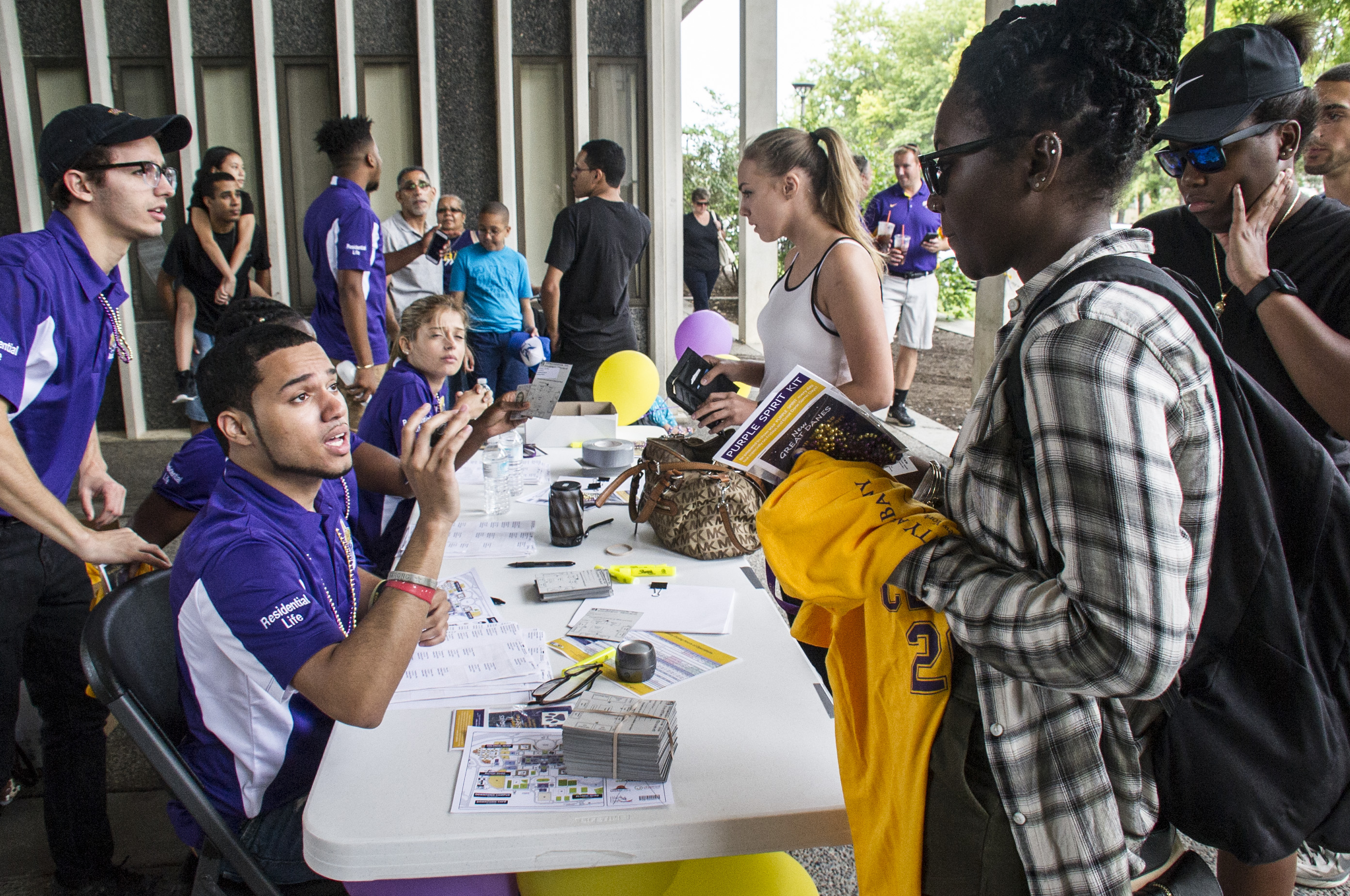
Living-Learning Communities
Live and take classes with other incoming freshmen who share your personal interests, passions or intended academic major.

Study Abroad
Become a global citizen: international experience is crucial to success in business, education, research, and public policy.

Undergraduate Research
Research, scholarship, and creative activities at the University at Albany is an option for all students, across all academic disciplines. You will be able to learn more about a specific academic field or career path all while building a long-lasting mentoring relationship with a faculty member or principal investigator.
Explore Minors
Build competency in a passion or strengthen your resume.
A minor consists of 18–24 graduation credits which must include a minimum of 9 graduation credits of advanced coursework at or above the 300 level. Most undergraduate degrees require completing a minor and it has to have a different title from your major.
- Africana Studies
- Anthropology
- Art History
- Atmospheric Science
- Broadcast Meteorology
- Chinese Studies
- Cognitive Science
- Communication
- Computer Science
- Creative Writing
- Criminal Justice Studies
- Cybersecurity
- Documentary Studies
- East Asian Studies
- Educational Studies
- Electrical and Computer Engineering
- Electronics
- Film Studies
- Emergency Preparedness, Homeland Security and Cybersecurity
- Forensic Science
- Game Design and Development
- Geographic Information Science
- Globalization Studies
- Informatics
- Instrumental Performance
- International Studies
- Japanese Studies
- Journalism (Fully Online Option)
- Judaic Studies
- Korean Studies
- Latin American and Caribbean Studies
- Law and Philosophy
- Legal Studies
- LGBTQ Studies
- Library and Information Science
- Linguistics
- Machine Learning
- Medical Anthropology
- Musical Performance
- Musical Theatre
- Nanotechnology
- Political Science
- Pre-Education
- Public Health
- Public Policy
- Religious Studies
- Russian and Eastern European Studies
- Social Welfare Studies
- Sustainability
- Theatrical Design/Technology
- Urban Studies and Planning
- U.S. Latino Studies
- Vocal Performance
- Women's, Gender and Sexuality Studies
- Toggle navigation
- Explore Themes
- Document Library
- Visualisation Gallery
- Methodology
- Data for Sustainable Development - UIS Blog
- Training and Workshops
- UNESCO website
International Standard Classification of Education (ISCED)
The world's education systems vary widely in terms of structure and curricular content. Consequently, it can be difficult to compare national education systems with those of other countries or to benchmark progress towards national and international goals.
The International Standard Classification of Education ( ISCED 2011 ) provides a comprehensive framework for organising education programmes and qualification by applying uniform and internationally agreed definitions to facilitate comparisons of education systems across countries. ISCED is a widely-used a global reference classification for education systems that is maintained and periodically revised by the UIS in consultation with Member States and other international and regional organizations. ISCED 2011 is the second major revision of this classification (initially developed in the 1970s and revised in 1997 ). It was adopted by the UNESCO General Conference in November 2011.
ISCED is essential for collecting and analysing cross-nationally comparable education statistics. The accompanying ISCED Fields of Education and Training 2013 ( ISCED-F ) classifies education programmes and related qualifications by fields of study according to the broad domain, branch or area of content covered. .
The ISCED 2011 Operational Manual provides further guidelines for classifying national education programmes and related qualifications according to ISCED 2011.
The UIS works closely with Member States and its data collection partners (such as OECD and Eurostat) to map education systems and collect data according to the ISCED classification. National ISCED mappings are published on our page devoted to ISCED mappings .
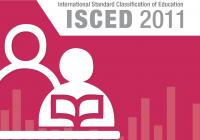
International Standard Classification of Education (ISCED) 2011
- Download (1.14 MB)
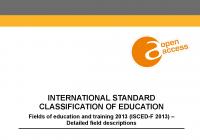
International Standard Classification of Education: Fields of Education and Training 2013 (ISCED-F 2013) – Detailed Field Descriptions
- Download (575.17 KB)
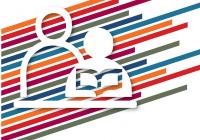
ISCED Fields of Education and Training 2013 (ISCED-F 2013): Manual to Accompany the International Standard Classification of Education 2011
- Download (777.25 KB)
- View more results
Latest News
Education data release 2023, uis data release features new sdg 4 indicators and disaggregated dimensions, what's next lessons on education recovery.
- Alumni & Giving
- Faculty/Staff Directory

The Graduate School of Education and Human Development
- Accreditation
- Faculty & Staff Directory
- Counseling & Human Development
- Curriculum and Pedagogy
- Educational Leadership
- Human and Organizational Learning
- Special Education and Disability Studies
- Individualized Master's Program
- PhD in Education
- Online Programs
- Prospective Students
- Request Info
- How to Apply
- International Applicants
- Funding Your Education
- Admissions Events
- Visit Campus
- Admitted Students
- Career Services
- Student FAQs
- Dates & Deadlines
- New Student Orientation
- New Student Guide
- Research Lab
- UNESCO Chair & Fellowship
- Futrell Scholars
- EdFix Podcast
- Feuer Consideration
- Refer a Student
- Fellowship and Summer Institute on Antisemitism & Jewish Inclusion in Educational Settings

Museum Education Student Hosts Fulbright Group as part of Field Placement

Dana Golan Miller, Tiffany McGettigan (Head of Edu, Hirshhorn Museum), Noa Turgeman, Tom Koren (Curatorial Studies, SVA), Maya Gayer (Oral History, Columbia), Besan Abu Abeid, Samah Wattad (GW Media), Dr. Anat Lapidot-Firilla (ED, Fulbright Israel)
Dana Golan Miller , a Museum Education Program master's student and Fulbright Israel Fellow, is completing her field placement at the Smithsonian Hirshhorn Museum. Last week, she hosted a group of Fulbright Israel Public Humanities Fellows who visited the museum and explored the new exhibit, REVOLUTIONS . She introduced the fellows to her supervisor, Tiffany McGettigan , who is Head of Education and also an alumna of GSEHD's Museum Education Program, as well as the curator, Marina Isgro.
Ms. Golan Miller's spring field placement showcases the program's integration of theory into practice, emphasizing the collaborative efforts between GSEHD and local museum institutions. It exemplifies academic training that deepens understanding of museums as institutions and explores innovative strategies for engaging diverse audiences with contemporary art.
Guests included:
- Dr. Anat Lapidot-Firilla, Executive Director, Fulbright Israel
- Noa Turgeman, Deputy Director of Programs
- Besan Abu Abeid, Programs Coordinator
- Maya Gayer, Oral History, Columbia University
- Shadi Omar, Museum Anthropology, Columbia University
- Tom Koren, Curatorial Studies, School of Visual Arts, New York
- Samah Wattad, Journalism, George Washington University
- Dana Golan- Miller, Museum Education Program, George Washington University
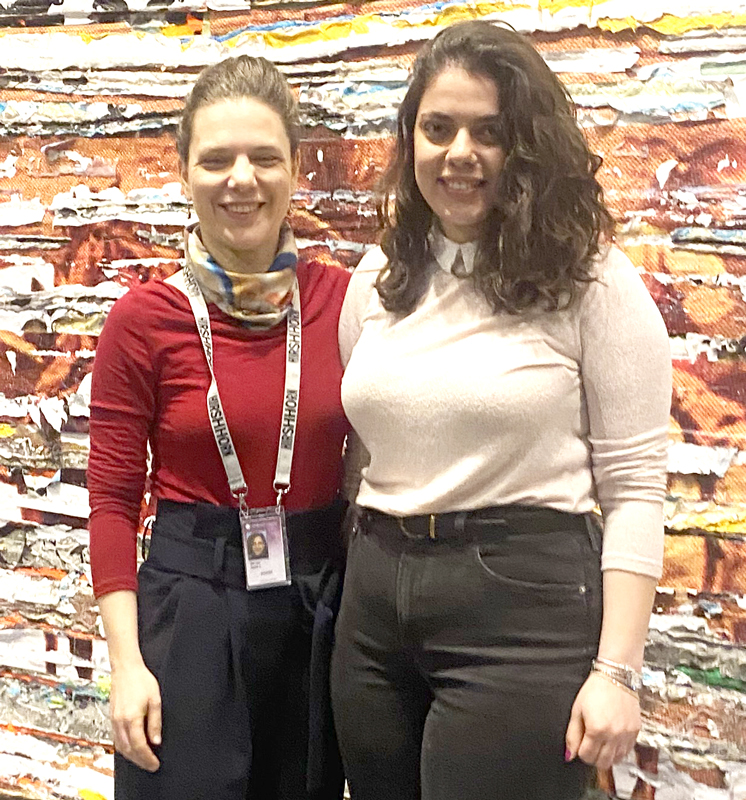
- COVID-19 Resources
- Student Learning
- Student Support
- Educator Licensure
- Education Quality Assurance
- Vermont Schools
- Data and Reporting
- State Board and Councils
Volume 18, Issue 12
The Agency of Education created the weekly field memo to keep subscribers up-to-date with current education policy, state-wide education initiatives, and official messages from the AOE. The Weekly Field Memo contains education-related posts from the Agency of Education (AOE), other State of Vermont agencies, federal agencies or Vermont's congressional delegation.
Contents: April 10, 2024
K-6 earth month eduseries.
- Theater Proficiency-Based Graduation Requirements Review
- BTA Training: Two dates available
Vermont Public: Eclipse Follow-Up Resources
- 2024 Developmental Disabilities Awareness Art Contest - Extended Deadline April 12, 2024
Voting Open for Red Clover, Vermont Golden Dome, and Green Mountain Book Awards
Grant announcement: statewide consultant grant applications open april 15, webinar: fema hazard mitigation grant program.
- Training Opportunity: MGT 417: Crisis Management for School-Based Incidents for Key Decision Makers
Audience: K-6 Educators Celebrate Earth Month with a free, fun, virtual series for grades K-6! In three 45-minute sessions, your class will discover how worms turn food scraps into nutrients for plants , learn how to be better stewards of Earth by recycling like you live here , and bust common recycling myths . Register for Earth Month EduSeries sessions online . Contact: Rhonda Mace at [email protected] or (802) 872-8100 x211
Theater Proficiency-Based Graduation Requirements Review
Audience: Theater educators Attention all theater educators, regardless of your specialization - your expertise is invaluable. We invite you to collaborate in reviewing and refining the K-8 Priority Performance Indicators. This workshop presents a unique opportunity to shape the recommended Theater Proficiency-Based Graduation Requirements proposed by the Agency of Education. We will convene remotely for two Wednesdays from 3:30 to 5 p.m. on May 8 and 15, 2024. Sign up using the Theater Proficiency-Based Graduation Requirements Review sign-up form. Contact: Lisa Bresler at [email protected]
BTA Training: Two Dates Available
Audience: Behavioral Threat Assessment Team Members School Behavioral Threat Assessment & Management (BTAM) training is a virtual, one-day training course presented by The Vermont School Safety Center, designed to prevent active shooter incidents and other targeted violence in our schools and school districts. This course also teaches participants how to assess threats and other disturbing behavior and take steps to reduce risk and prevent harm. Prior to this training, we strongly encourage schools and school districts to identify potential members of your BTA teams and attend this training as a "team". Act 29 requires that BTA policies and procedures are implemented or updated by SY 2024-2025 for current BTA teams, and that BTATs and annual trainings are implemented or updated by July 1, 2025. All current BTA teams should take this training if not already done so. Contact: Sunni Eriksen at [email protected]
Audience: Vermont Educators Take time, post-eclipse, to talk with students about what they observed. Listen to But Why’s Podcast for Curious Kids’ featured episode about the eclipse . In this podcast episode, Jane Lindholm speaks with Bridgewater State University solar physicist Martina Arndt, Fairbanks Museum planetarium director Mark Breen, and Thomas A. Hockey, author of America’s First Eclipse Chasers. Additionally, visit Vermont Public’s Eclipse page to find all educational resources in one place. Contacts: Emily Leute at [email protected] or Heather Duhamel at [email protected]
2024 Developmental Disabilities Awareness Art Contest - Extended Deadline April 12
Audience: Superintendents, Special Education Administrators, All Educators, All School March is Developmental Disabilities Month, and the Vermont Agency of Education's Special Education Team is hosting an art contest for students with developmental disabilities. The theme for the 2024 contest is "We Are All Different and That's Beautiful." Each school LEA may submit an entry for each grade-band to [email protected] described in the 2024 Developmental Disabilities Awareness Art Contest Guidelines and 2024 Developmental Disabilities Awareness Art Contest Release Form by extended deadline, April 12, 2024. Contact: Heather Willis-Doxsee at [email protected]
Audience: Vermont Educators Student vote submission forms are now open for the 2023-2024 nomination lists for all three Vermont youth book awards. Voting closes Sunday, May 26, and the winners will be announced the first week of June. Adults can submit votes for students for the Red Clover and Vermont Golden Dome book awards through the same form this year. Teens can submit their own votes for the Green Mountain Book Award. The Vermont Department of Libraries had over 18,000 Vermont youth participate in voting last year and hope to receive even more votes this year! To vote, use the 2024 Red Clover and Vermont Golden Dome Book Award Vote Submission Form and the 2024 Green Mountain Book Award Voting Form Contact: Lilly Talbert at [email protected]
Audience: Education Providers, Organizations, Leadership Groups Grant applications for Statewide Consultant Grants which include, Deaf or Hard of Hearing, Interdisciplinary Team, and Blind or Visually Impaired grants, open April 15, 2024, with a due date of May 15, 2024. Applicants will need to sign into their GMS account to apply. The purpose of these grants is to improve local educational teams' capacities to implement research-based interventions and current best practices in the field of education. Contact: Laura Greenwood at [email protected]
Audience: Superintendents, School Heads, School Business Managers In partnership with the Department of Public Safety, The Agency of Education is hosting an informational, school-specific webinar on April 19, 2024, from 2-3 p.m. about the Federal Emergency Management Agency (FEMA) Hazard Mitigation Grant Program (HMGP) . Funds are available to support natural hazard mitigation in Vermont after the July 2023 flooding. Pre-applications are due by June 21, 2024. Please see the FEMA Hazard Mitigation Grant Program information page to learn more. Contact: Taylor Goodwin at [email protected] (webinar) [email protected] (grant program)
Training Opportunity: MGT 417: Crisis Management for School-Based Incidents for Key Decision Makers
Audience: First responders, school administrators, school safety and security personnel On May 23-24, 2024 from 8 a.m.-4p.m. the Department of Public Safety is holding an in-person, DHS/FEMA-certified course that provides operational-level details to support many of the topics covered in AWR148: Crisis Management for School-Based Incidents. The course will be held at the Town of Barre Municipal Building and will cover Partnering Rural Law Enforcement, First Responders, and Local School Systems. Topics include: All-Hazards Planning and Preparedness, Vulnerability Assessments, Threat Assessment Management and more. A FEMA SID Required (please visit FEMA SIS website to register for your SID). Please register for this course by May 9 via the RDPC website . Contact: Sunni Eriksen at [email protected]
Subscribe Online
The field memo has time-sensitive and relevant information designed for students, teachers, and staff. The agency encourages principals, headmasters, and superintendents to share the memo with their education community. Additionally, individuals can subscribe or unsubscribe online .
Questions? Email Ted Fisher at [email protected] .
Brockton High's unified track team embraces the power of inclusion

BROCKTON – Brockton High School’s unified track and field team returned to its home at Marciano Stadium Wednesday afternoon, competing against the unified team from New Bedford.
Unified track and field teams joins students with and without disabilities on the same team. The program has been stalled in Brockton since 2019 due to COVID but is now being reintroduced thanks to a $5,000 grant from the Special Olympics of Massachusetts. This grant will allow the program to run until at least the 2025-2026 school year and give Brockton the opportunity to join SOMA’s Unified Champion Schools program, which is dedicated to promoting social inclusion using sports as a foundation.
“We’re grateful to Special Olympics of Massachusetts for their continued support of Brockton’s students,” said Acting Superintendent of Schools James Cobbs . “It’s impossible to overstate the value of inclusion and acceptance of all of our students, and the Unified Champion Schools program plays such a critical role in helping us provide a comprehensive school experience."
'Elated': How Brockton middle school conquered MCAS, beating the state average in writing
At Wednesday's meet, students competed in several jumping, running and throwing events adapted to be inclusive for all regardless of ability. The overall goal of the program is to bring together students of all abilities through sports and athletics.
According to the Special Olympics Unified Champion School program’s website, “these are school climates where students with disabilities feel welcome and are routinely included in, and feel a part of, all activities, opportunities and functions."
Bringing back Unified Track and Field Team
Brockton High's unified track and field team started in 2016 before shutting in 2019 due to the pandemic. But the 2019 team ended the program on a high note, winning the MIAA Division II State championships.
'I’m in disbelief': 28 Brockton High seniors surprised with full college scholarships
Now thanks to a grant from the Special Olympics of Massachusetts, the program will continue.
As part of its commitment, Brockton Public Schools will establish a district-level leadership team comprised of individuals from a variety of disciplines, including special education, physical education, athletics, family engagement and social-emotional learning. This team will meet regularly to ensure students are enjoying the full depth of the program’s benefits.
Schools that participate in the unified program can choose from over 30 sports offered by the Special Olympics from table tennis to the triathlon. Brockton High had a unified basketball team in 2010, but Dianne Davis, Brockton Public School's special education coordinator, said it was hard to maintain the program.
"This year is our rebuilding year, so it will be track and field with hopes of a run at basketball again next year," said Davis, adding that she hopes the program will gain more traction and participation now that the team is back in action.
30 Best universities for Mechanical Engineering in Moscow, Russia
Updated: February 29, 2024
- Art & Design
- Computer Science
- Engineering
- Environmental Science
- Liberal Arts & Social Sciences
- Mathematics
Below is a list of best universities in Moscow ranked based on their research performance in Mechanical Engineering. A graph of 269K citations received by 45.8K academic papers made by 30 universities in Moscow was used to calculate publications' ratings, which then were adjusted for release dates and added to final scores.
We don't distinguish between undergraduate and graduate programs nor do we adjust for current majors offered. You can find information about granted degrees on a university page but always double-check with the university website.
1. Moscow State University
For Mechanical Engineering
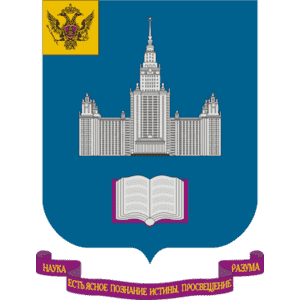
2. Bauman Moscow State Technical University
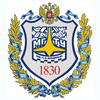
3. National Research University Higher School of Economics

4. Moscow Aviation Institute
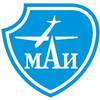
5. N.R.U. Moscow Power Engineering Institute
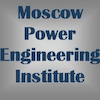
6. National Research Nuclear University MEPI

7. National University of Science and Technology "MISIS"
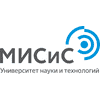
8. Moscow Institute of Physics and Technology

9. Moscow State Technological University "Stankin"
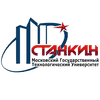
10. RUDN University
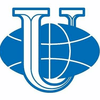
11. Moscow Polytech

12. Moscow State University of Railway Engineering
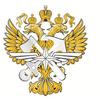
13. Finance Academy under the Government of the Russian Federation

14. Moscow Medical Academy
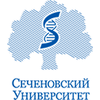
15. Russian State University of Oil and Gas
16. mendeleev university of chemical technology of russia.
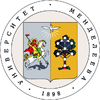
17. Russian National Research Medical University

18. Plekhanov Russian University of Economics
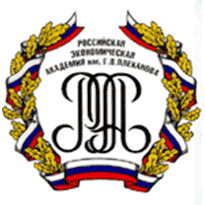
19. National Research University of Electronic Technology

20. Moscow State Pedagogical University
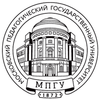
21. Russian Presidential Academy of National Economy and Public Administration
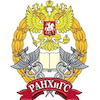
22. State University of Management

23. Moscow State Institute of International Relations
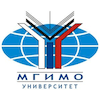
24. Russian State Geological Prospecting University
25. russian state agricultural university.
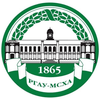
26. New Economic School
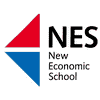
27. Moscow State Technical University of Civil Aviation

28. Russian State University for the Humanities
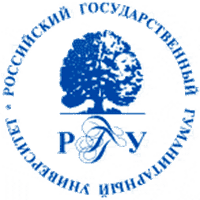
29. Russian State Social University
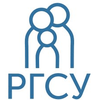
30. Moscow State Linguistic University
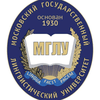
Universities for Mechanical Engineering near Moscow
Engineering subfields in moscow.

Want to see more like this?
Get our local education coverage delivered directly to your inbox.

- Copy article link
Parkway needs a new early childhood center. Neighbors prefer the grassy field.
Monica obradovic.
- Apr 13, 2024
This rendering shows Parkway School District’s proposed early childhood center off Wren Avenue in Manchester.
MANCHESTER — What began as a routine trip to school last month nearly turned into a disaster. Kayla Neuenswander watched as her son, a kindergartener at Wren Hollow Elementary, froze on his bike in the middle of a street as a car barreled towards him.
“I screamed bloody murder,” Neuenswander said.
The car screeched to a halt. Everyone was fine, but the incident was jarring.
“It was one of the worst mornings, and that was before I knew about what’s happening here,” Neuenswander said.
That same stretch of Wren Avenue, near two existing schools, could soon be home to a new, $32 million early childhood center proposed by Parkway School District.
Critics argue there’s already too much traffic in the area. Adding a third school on the two-lane residential street would only make matters worse — and possibly dangerous, parents say. Moreover, the district plans to put the new center on top of a field that neighbors say they love.
People are also reading…
- Ian Froeb’s STL 100: The best St. Louis restaurants of 2024
- Gordon Ramsay opens St. Louis restaurant at Four Seasons hotel April 17
- Former AT&T tower in downtown St. Louis sold to Boston firm
Rockwood school board member who mocked disabilities, Pride flags and ‘libtards’ to resign
- Cardinals activate Lars Nootbaar in move that hints at Willson Contreras' readiness, too
Wentzville schools superintendent leaves after less than two years
- Here’s where the clearest sky should be in southeast Missouri for the solar eclipse
- St. Louis-area investors, tech founders make the Forbes billionaires list
- Scientists want to know why coyotes are in Forest Park. The wily animals have other plans.
- The 2024 eclipse in St. Louis: What it is, where to watch and why you need those glasses
- Habitat for Humanity pitches its biggest housing development in St. Charles County
- Thousands head south from St. Louis to see the eclipse. A giant traffic jam ensues.
- Troubled gas station to close downtown as WSJ calls St. Louis 'real estate nightmare'
- What promise Sonny Gray kept with the final pitch of his ‘dominant’ Cardinals debut
- Stolen as a baby, St. Louis woman reconnects with hidden past
Few deny the need for a new facility. For more than a decade, between 300 and 600 children have been on the wait list for early childhood programs in Parkway, one of the largest districts in Missouri. The district’s current center is also one of the few places where children with special needs can find adequate and affordable care, district officials say.
“It’s heartbreaking,” said Elena Amirault, the district’s director of early learning. “We have to turn families away all the time.”
Some residents have shown up to public meetings wearing green to protest the location of the school. At one meeting, a child held a sign questioning why the district needed to spend millions “for Elena’s new office.”
Two years ago, amid an ongoing, nationwide shortage of school bus drivers, Parkway stopped providing bus service to elementary students who, like Neuenswander’s kids, live within a mile of their schools.
Since then, Neuenswander said, the area near Wren Hollow Elementary has seen an influx of traffic, as well as parents and their students walking or riding their bikes to school.
“I can’t fathom the chaos of walking near more cars,” Neuenswander said.
And parents, neighbors and students say the field is a treasured play area — especially as green space has dwindled in Manchester.
“Please don’t take our field,” fifth-grader Colin Christensen pleaded to the board at a meeting on Thursday. “Let it stay green.”
A child care ‘desert’
There may be nowhere else to put the new center.
At least three other sites have been considered — spaces at or near South Middle School and Sorrento Springs or Oak Brook elementaries — but all have been ruled out, either because of traffic issues or added expense due to a floodplain.
The district has also looked for locations on non-Parkway properties, with no success. At a board meeting on Thursday, Chief Financial Officer Patty Bedborough said a real estate agency is looking, but there are “very few land spaces” within the desired area.
“It’s tough because much of Parkway is developed,” Bedborough said.
If the Wren Avenue field plan moves forward, the vision is to engineer a space “with nature and outdoor learning as an emphasis,” Amirault, the director of early learning, said.
The facility would have two outdoor classrooms, four therapy/intervention rooms, nature trails, a brand-new ADA-compliant playground, a community garden, a stocked pond so kids could fish during PE classes, a gym/storm shelter, 13 classrooms and more.
Part of the appeal for Parkway’s early childhood programs is that the district is more affordable than other options, according to Amirault.
Tuition for private child care facilities within the district’s boundaries ranges from $370 to $1,995 a month, with the mean at $1,115 a month, a 2021 demographic study of the district found.
Parkway also serves children with special needs and students who are non-English speaking.
“We’re getting kids that don’t have the opportunity for a quality early experience before kindergarten,” Amirault said.
A new early childhood center has been in the works in Parkway for years. Talks began as early as 2019, when district officials started to look for a place to put it, Director of Facilities Ralph Knese said at a recent school board meeting.
In 2022, voters passed Proposition S, a no-tax-increase bond issue to address the district’s maintenance and repair needs. A board-approved plan for what the bond issue would fund included a new early child care center, although at a different location that’s since been ruled out.
Apart from the widespread objection, the current proposed site on the Wren Avenue field seems to the best option, said Amirault, the director of early learning.
In 2021, the district conducted a demographic and market study to see if demand warranted a new facility. It did. The study also showed that the zip code 63021, which contains the field, had the highest concentration of need in the district.
The area had many children being born, but not enough child care centers, Amirault said.
“They call it a child desert, meaning there’s more children than there are slots available,” Amirault said.
The Wren Avenue development plan still must be approved by the city of Manchester — including additional rounds of public input.
“You know anybody who’s got 20 acres?” Superintendent Keith Marty said at the board meeting Thursday. “Because that would be welcome.”
View life in St. Louis through the Post-Dispatch photographers' lenses. Edited by Jenna Jones.
- Author email
Get email notifications on {{subject}} daily!
{{description}}
Email notifications are only sent once a day, and only if there are new matching items.
Followed notifications
Please log in to use this feature, related to this story, most popular.
A Rockwood school board member who made headlines in recent years for mocking students with disabilities and calling a teachers' union "terror…
Danielle Tormala became superintendent in July 2022, replacing Curtis Cain who took the top job in Rockwood School District.
St. Louis-area school races: Money, turnout and a rejection of ‘partisan politics’
The election results followed a national backlash against school boards that have tilted conservative in recent years.
WashU fraternity, sorority suspended after eggs, racial slurs thrown at dining hall
The incident happened around 10 p.m. March 21 at the Bear's Den dining hall in Zetcher House, a dorm on Washington University's campus in Clayton.
St. Louis, Normandy school districts docked for late financial audits
The state has kept close to $3.7 million in state funding from SLPS and $5.7 million from Normandy while awaiting the audits.
Join the Facebook group Chalk Talk to discuss education in St. Louis
Parenting newsletter, newspapers in education.
- Courtesy Parkway School District
- Notifications
Get up-to-the-minute news sent straight to your device.
Breaking News
National news.
Best Global Universities for Mechanical Engineering in Russia
These are the top universities in Russia for mechanical engineering, based on their reputation and research in the field. Read the methodology »
To unlock more data and access tools to help you get into your dream school, sign up for the U.S. News College Compass !
Here are the best global universities for mechanical engineering in Russia
Tomsk polytechnic university.
See the full rankings
- Clear Filters
- # 74 in Best Universities for Mechanical Engineering
- # 879 in Best Global Universities (tie)
- myState on Mississippi State University
- Directory on Mississippi State University
- Calendars on Mississippi State University
- A-Z Index on Mississippi State University
- Maps on Mississippi State University
- News on Mississippi State University
- Contact on Mississippi State University
Starkville-MSU Community Band announces free concert April 21
Contact: Bethany Shipp
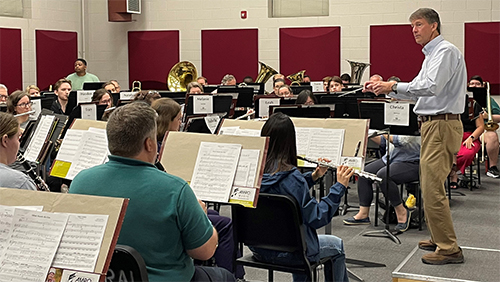
STARKVILLE, Miss.—The Starkville-MSU Community Band will present its final concert of the season on Sunday, April 21.
Including Mississippi State faculty, staff and students, and Golden Triangle residents, the band will perform at 2 p.m. in the Kent Sills Band Hall, located at 72 Hardy Road on MSU’s campus. Admission is free and open to the public.
The program will begin with Mark Camphouse’s “Air Mobility Command March,” which was written for the U.S. Air Force Band of Mid-America, followed by a haunting arrangement of the old Appalachian tune “Wayfaring Stranger.” The program will continue with David Holsinger’s interpretation of the old Black gospel melody “Were You There,” titled “On an American Spiritual.” The performance also will feature Roland Barrett’s “Silent Stands the Elm,” inspired by the symbolism of the Survivor Tree and dedicated to the victims and survivors of the 1995 attack on the Federal Building in Oklahoma City. The concert will conclude with Franz von Suppe’s rousing “Light Cavalry Overture.”
The community band is directed by Johnny Folsom, a lecturer and supervisor for student interns in MSU’s Department of Music.
Learn more about the Department of Music, housed in MSU’s College of Education, at https://www.music.msstate.edu/ .
Mississippi State University is taking care of what matters. Learn more at www.msstate.edu .
Friday, April 12, 2024 - 3:25 pm
- Arts & Society
- Community Engagement & Outreach News
- College of Education
You may also be interested in…
Starkville named best small town in the south by usa today.
April 10, 2024
MSU observes National Nutrition Month during March
March 26, 2024
New grant aids MSU’s International Institute in issuing student passports, expanding study abroad experiences
April 11, 2024
- Find Mississippi State University on Facebook
- Find Mississippi State University on Instagram
- Find Mississippi State University on LinkedIn
- Find Mississippi State University on Pinterest
- Find Mississippi State University on Twitter
- Find Mississippi State University on YouTube

IMAGES
VIDEO
COMMENTS
Mind map of top level disciplines and professions. An academic discipline or field of study is known as a branch of knowledge.It is taught as an accredited part of higher education.A scholar's discipline is commonly defined and recognized by a university faculty. That person will be accredited by learned societies to which they belong along with the academic journals in which they publish.
Education is a discipline that is concerned with methods of teaching and learning in schools or school-like environments as opposed to various nonformal and informal means of socialization (e.g., rural development projects and education through parent-child relationships).
A framework for classifying education programmes and qualifications by levels and fields of education. The document describes the detailed fields of education and training 2013 (ISCED-F 2013) and provides examples, lists and codes.
Specialized Skills. Teaching and education degrees build advanced knowledge and skills for teachers. Enrollees study the history and philosophy of education, gaining a deeper understanding of its purpose and function in society. They also build skills in classroom management, lesson planning, and student assessment. 4.
ISCED-F 2013 is a manual that accompanies the International Standard Classification of Education (ISCED) 2011, which is the reference framework for organizing education programmes and qualifications by levels and fields. It provides guidance on the application of ISCED-F criteria and examples of coding and aggregation for analysis and publication.
The term "education" originates from the Latin words educare, meaning "to bring up," and educere, meaning "to bring forth." The definition of education has been explored by theorists from various fields. Many agree that education is a purposeful activity aimed at achieving goals like the transmission of knowledge, skills, and character traits. However, extensive debate surrounds its precise ...
Learn the definition of field of education from the UNESCO UIS Glossary, a comprehensive source of terms and concepts related to education. Find out what field of education means, how it is used and what are its sources.
Field of Education is a specific area of study within the broader field of education, such as curriculum development, educational psychology, or educational leadership. In-depth Overview Long definition : The term "field of education" refers to a specific area or discipline of study within the realm of formal learning and academic institutions.
Philosophy of education is the branch of applied or practical philosophy concerned with the nature and aims of education and the philosophical problems arising from educational theory and practice. Because that practice is ubiquitous in and across human societies, its social and individual manifestations so varied, and its influence so profound ...
Many education majors pursue careers as teachers in various school settings, while others might go into a related field, such as education policy, curriculum development or health care. Some ...
Education is everyone's right throughout life. Education is a basic human right and a global public good with the power to transform individual lives, communities and the planet for the better over generations. UNESCO's Education Sector provides global and regional leadership to ensure every child, youth and adult has access to quality education throughout life while keeping two priorities ...
The Future of Education panel, moderated by Dean Bridget Long and hosted by HGSE's Askwith Forums, focused on hopes for education going forward, as well as HGSE's role. "The story of HGSE is the story of pivotal decisions, meeting challenges, and tremendous growth," Long said. "We have a long history of empowering our students and ...
What the education field is encompasses a broad range of other career paths as well, in academic research, student development, and curriculum and policy design, among other areas. Students and professionals in this field are often drawn to positions that allow them to support the development and growth of others. Whether they want to work in ...
The 10 Most Significant Education Studies of 2021. From reframing our notion of "good" schools to mining the magic of expert teachers, here's a curated list of must-read research from 2021. By Youki Terada, Stephen Merrill, Sarah Gonser. December 9, 2021. It was a year of unprecedented hardship for teachers and school leaders.
Educational Psychology Applied. Psychologists working in education study the social, emotional and cognitive processes involved in learning and apply their findings to improve the learning process. Some specialize in the educational development of a specific group of people such as children, adolescents or adults, while others focus on specific ...
Education is more than a job, it's a calling. As we all enter into a new school year, we need to ask ourselves what we want to be to the field of education.
Tweet your comments with #K12BigIdeas. No. 1: Kids are right. School is boring. Out-of-school learning is often more meaningful than anything that happens in a classroom, writes Kevin Bushweller ...
Field of Education Types. 01 - Natural and Physical Sciences. Natural and Physical Sciences is the study of all living organisms and inanimate natural objects, through experiment, observation and deduction. The theoretical content of Broad Field 01 Natural and Physical Sciences includes: atmospheric sciences. biological processes.
Education in Russia; Ministry of Education and Ministry of Science and Higher Education; Minister for Education and Minister for Science and Higher Education: ... residency in medicine, assistantship in the field of art, adjunctura in the field of military science) - it is available for persons who have a specialist degree or master's degree; ...
The Standards for Excellence in Education Research lay out some best practices that would guide the education science field to produce stronger work, plus some principles that are specific to ...
This school year, the district has received field trip requests for 15,000 more students than a year ago, student experience director Kim Hill said. Funding comes from a variety of sources ...
Program of Study. By earning your BS in Early Childhood/Childhood Education at UAlbany you'll gain the classroom-based knowledge and hands on experience you need for a successful career teaching young children or elementary students. Your coursework will include topics for teaching, such as educational psychology, child development, early ...
The world's education systems vary widely in terms of structure and curricular content. Consequently, it can be difficult to compare national education systems with those of other countries or to benchmark progress towards national and international goals. The International Standard Classification of Education (ISCED 2011) provides a comprehensive framework for organising
Dana Golan Miller, a Museum Education Program master's student and Fulbright Israel Fellow, is completing her field placement at the Smithsonian Hirshhorn Museum.Last week, she hosted a group of Fulbright Israel Public Humanities Fellows who visited the museum and explored the new exhibit, REVOLUTIONS.She introduced the fellows to her supervisor, Tiffany McGettigan, who is Head of Education ...
The Agency of Education created the weekly field memo to keep subscribers up-to-date with current education policy, state-wide education initiatives, and official messages from the AOE. The Weekly Field Memo contains education-related posts from the Agency of Education (AOE), other State of Vermont agencies, federal agencies or Vermont's ...
0:04. 0:50. BROCKTON - Brockton High School's unified track and field team returned to its home at Marciano Stadium Wednesday afternoon, competing against the unified team from New Bedford ...
Below is a list of best universities in Moscow ranked based on their research performance in Mechanical Engineering. A graph of 269K citations received by 45.8K academic papers made by 30 universities in Moscow was used to calculate publications' ratings, which then were adjusted for release dates and added to final scores.
If the Wren Avenue field plan moves forward, the vision is to engineer a space "with nature and outdoor learning as an emphasis," Amirault, the director of early learning, said.
India. Italy. Japan. Netherlands. See the US News rankings for Mechanical Engineering among the top universities in Russia. Compare the academic programs at the world's best universities.
The Starkville-MSU Community Band will present its final concert of the season on Sunday, April 21. Including Mississippi State faculty, staff and students, and Golden Triangle residents, the band will perform at 2 p.m. in the Kent Sills Band Hall, located at 72 Hardy Road on MSU's campus. Admission is free and open to the public.